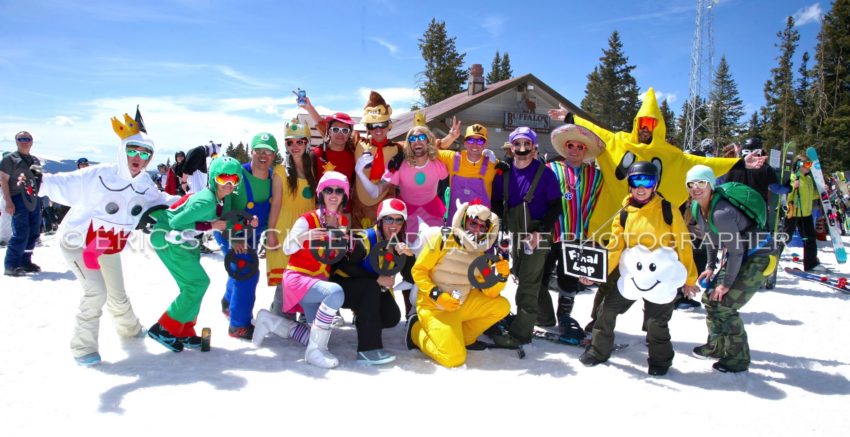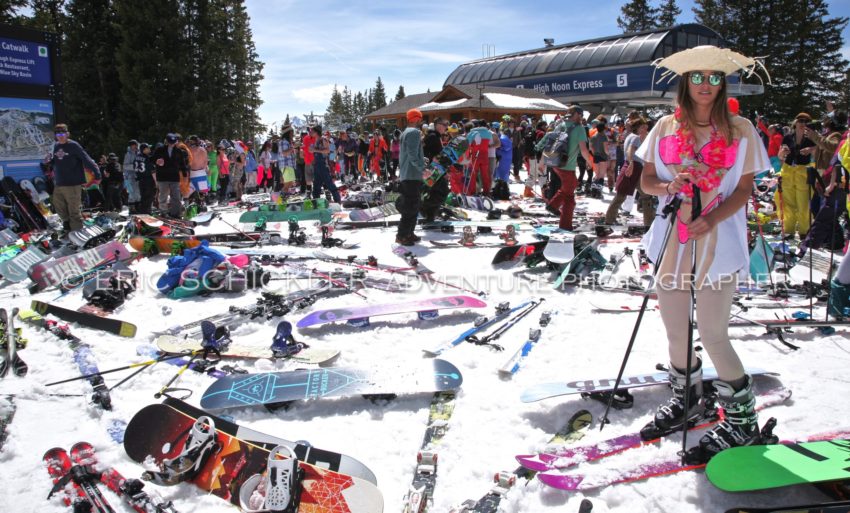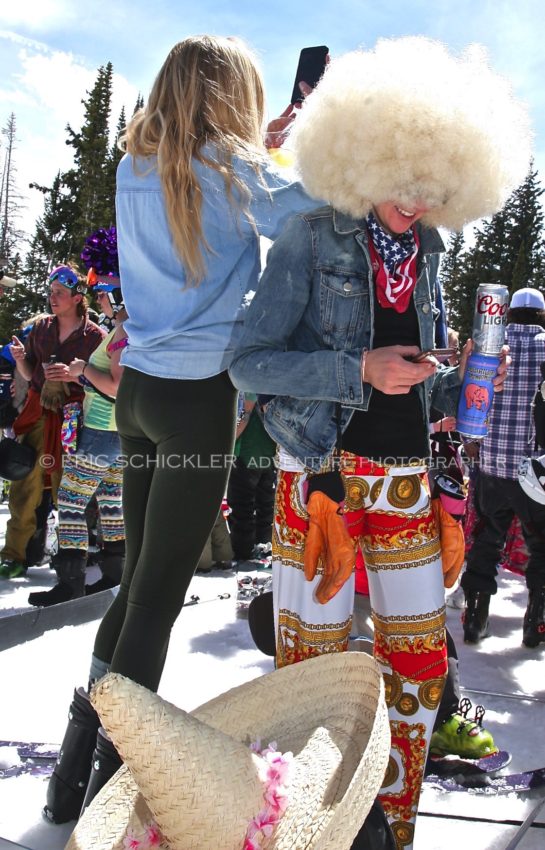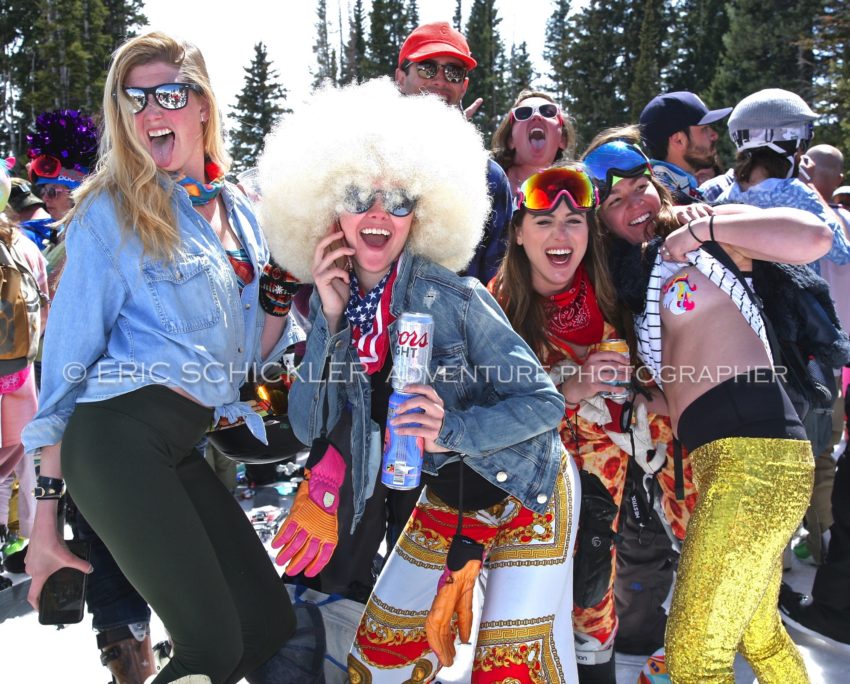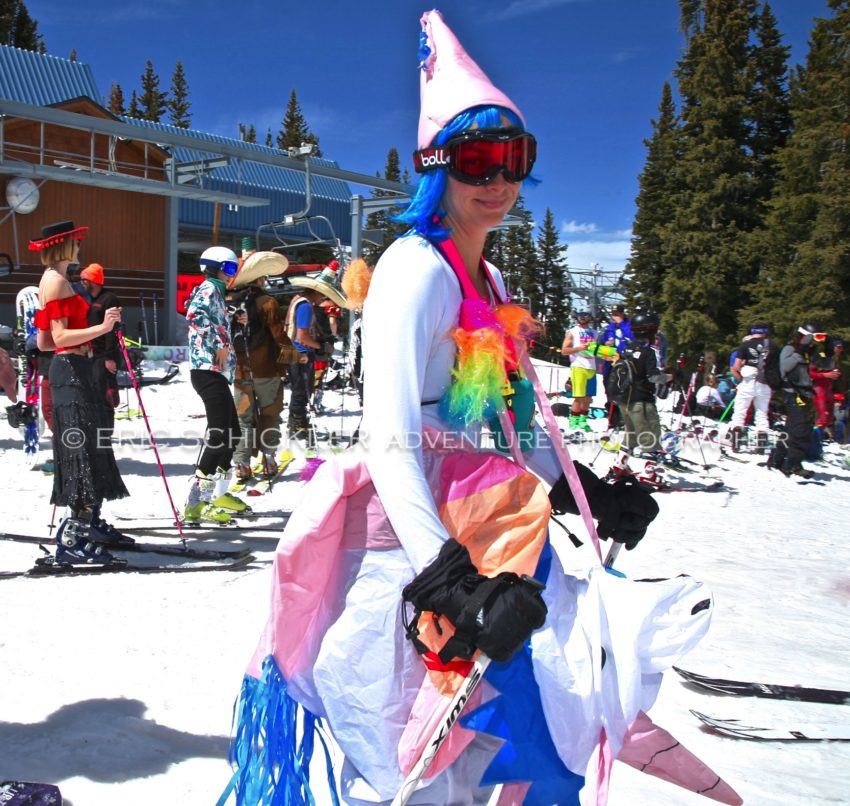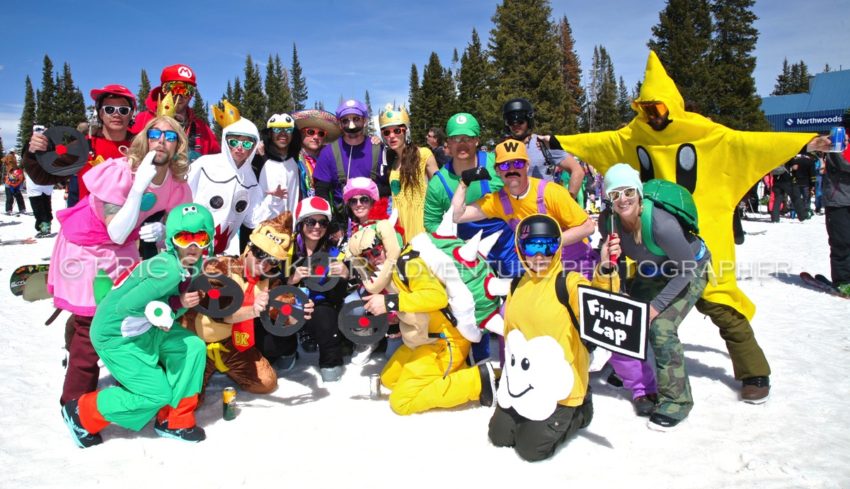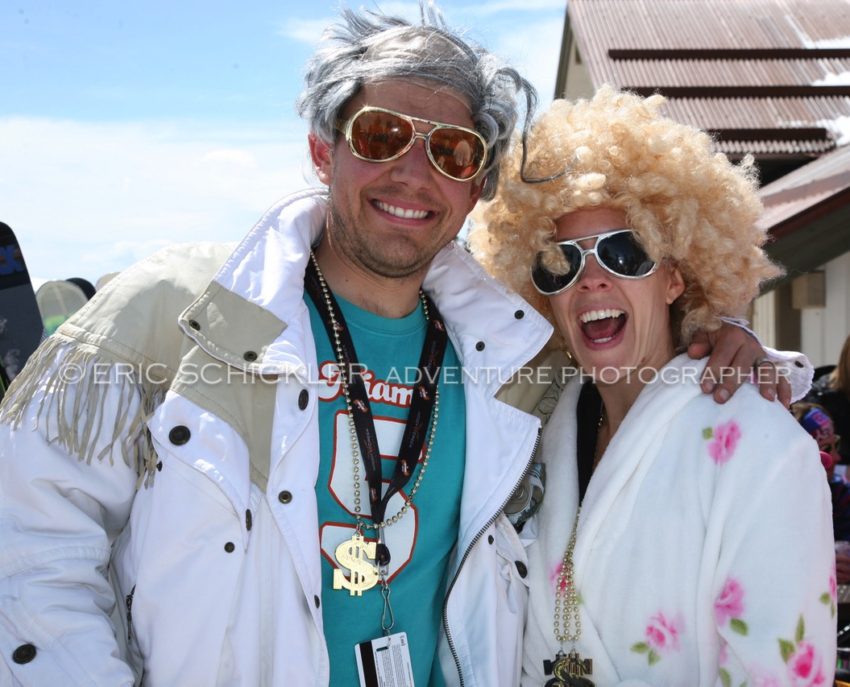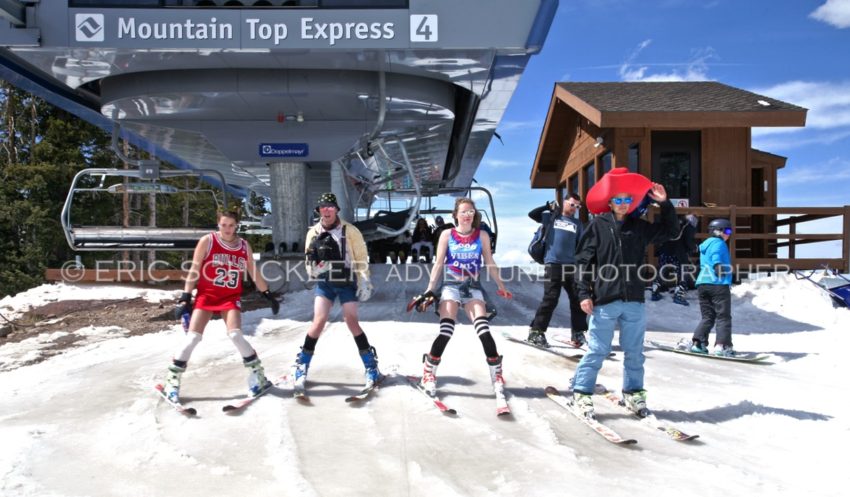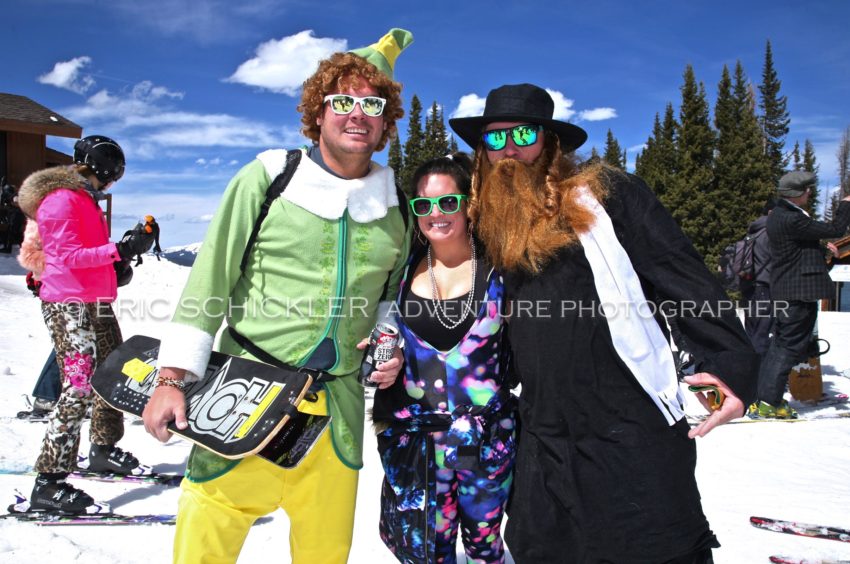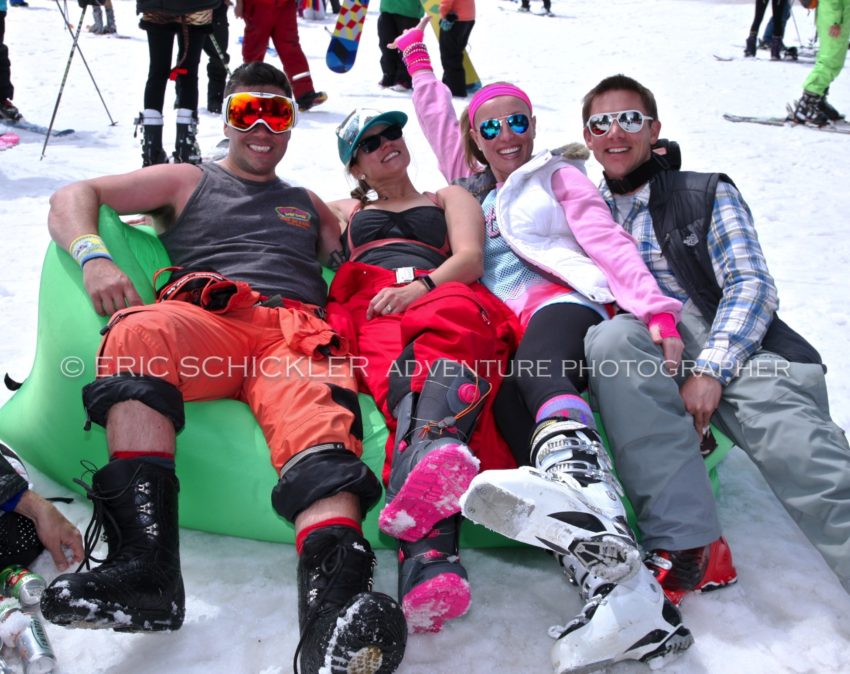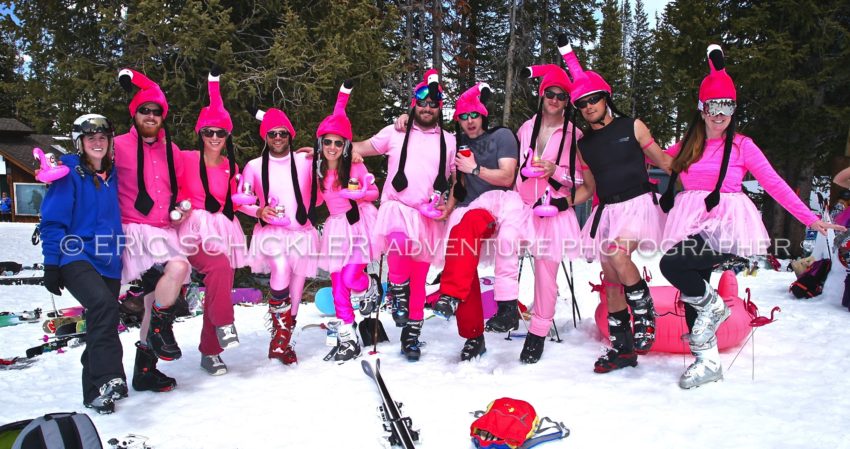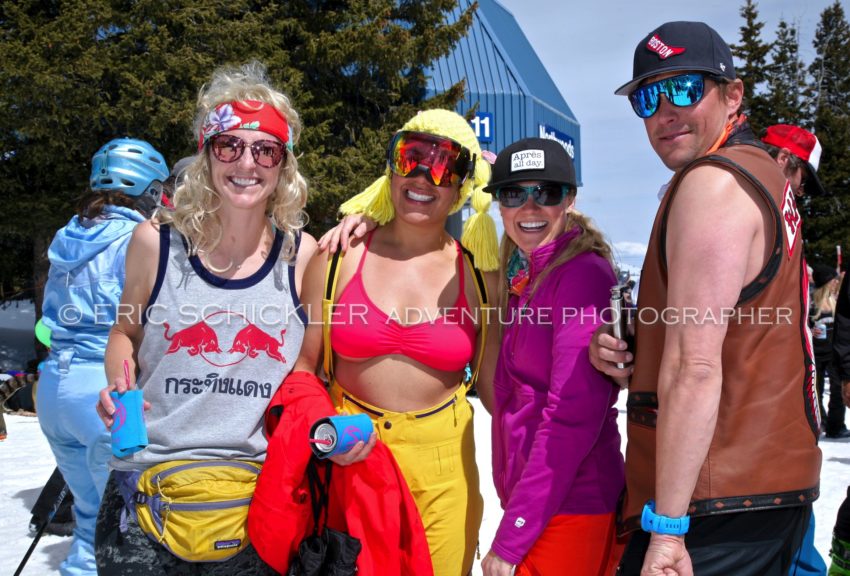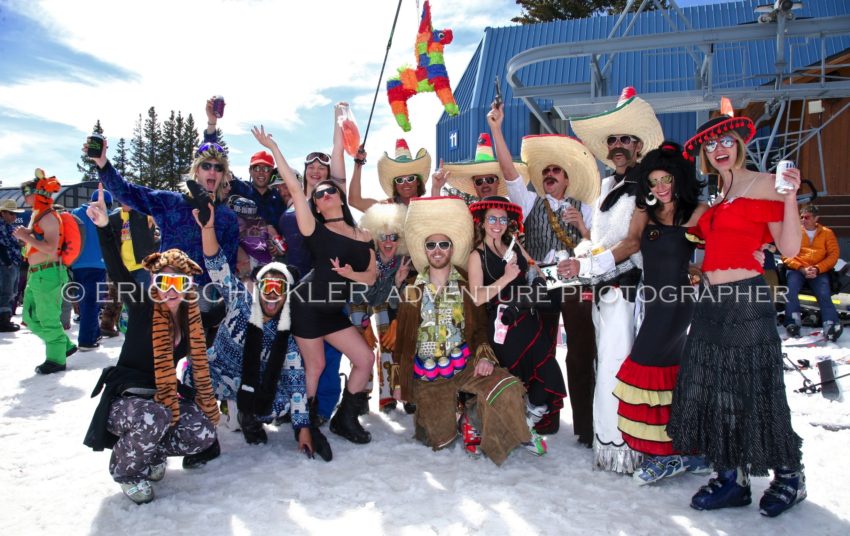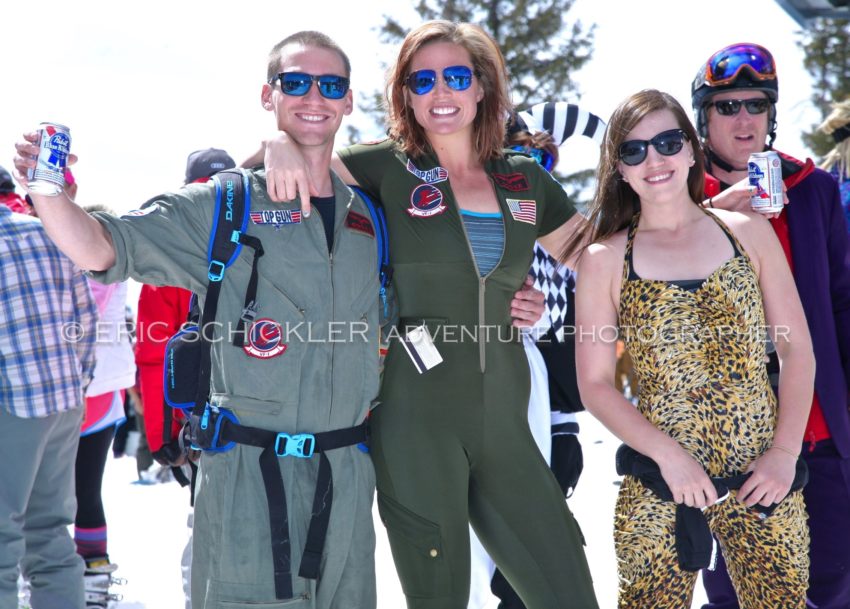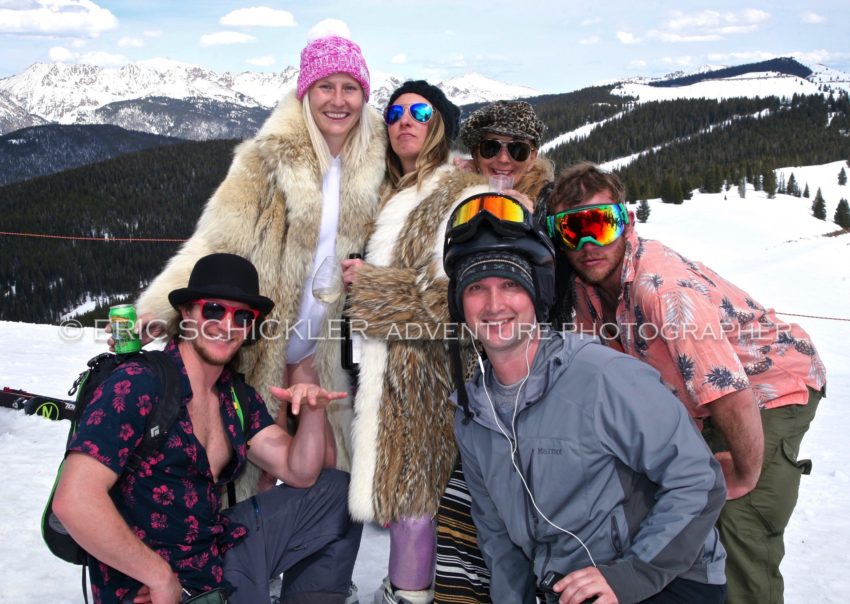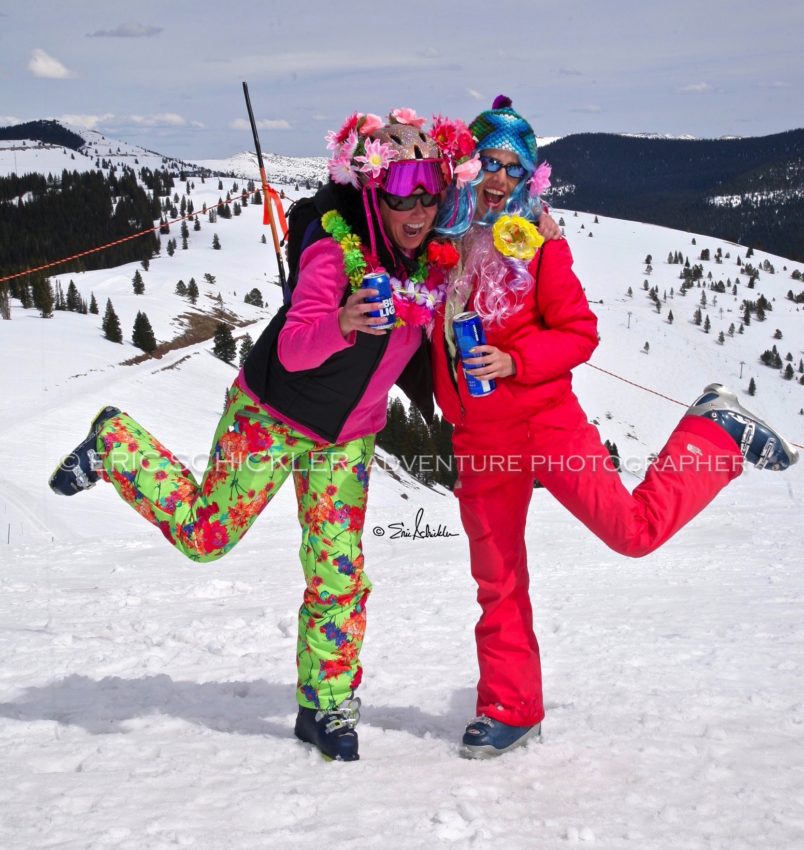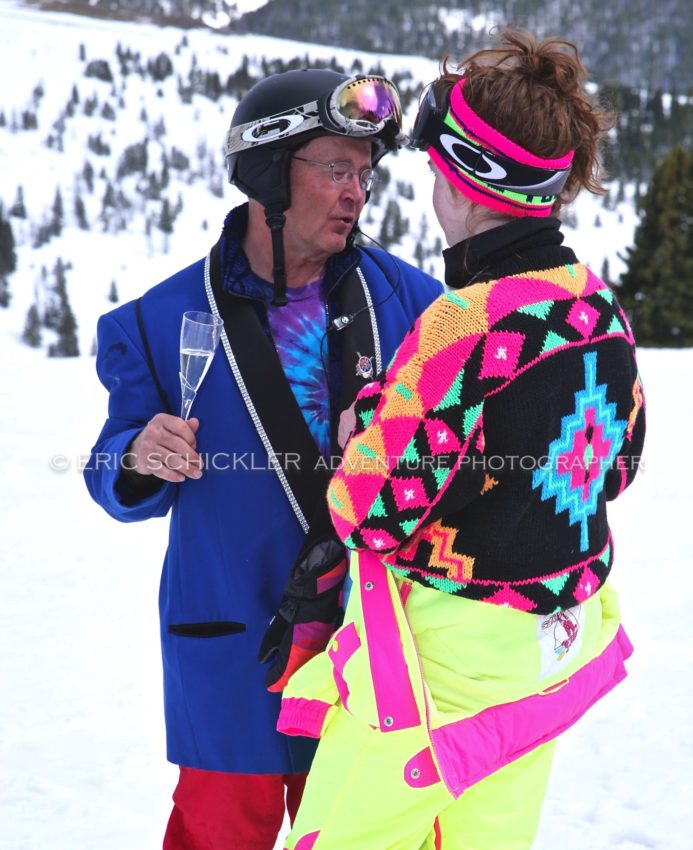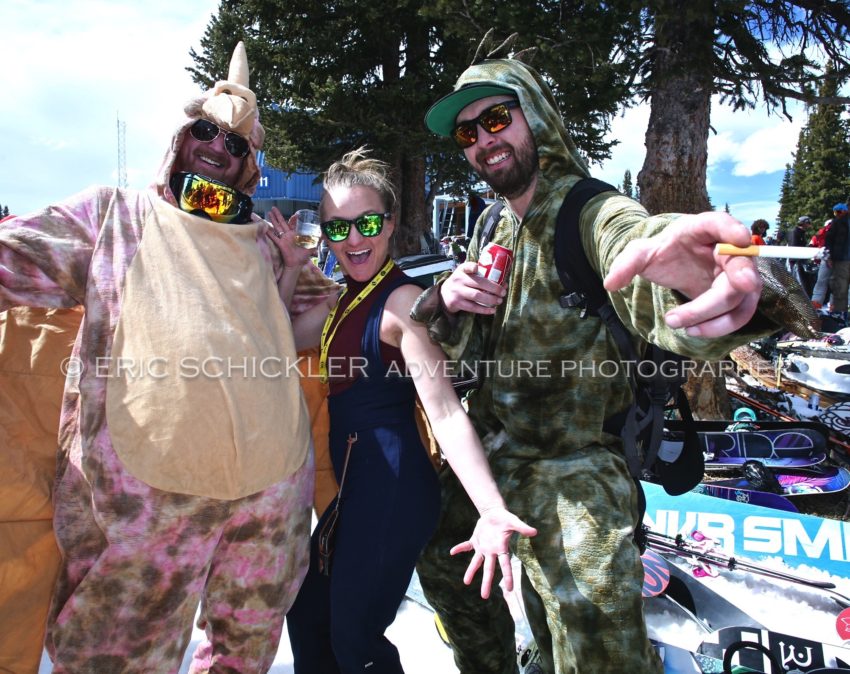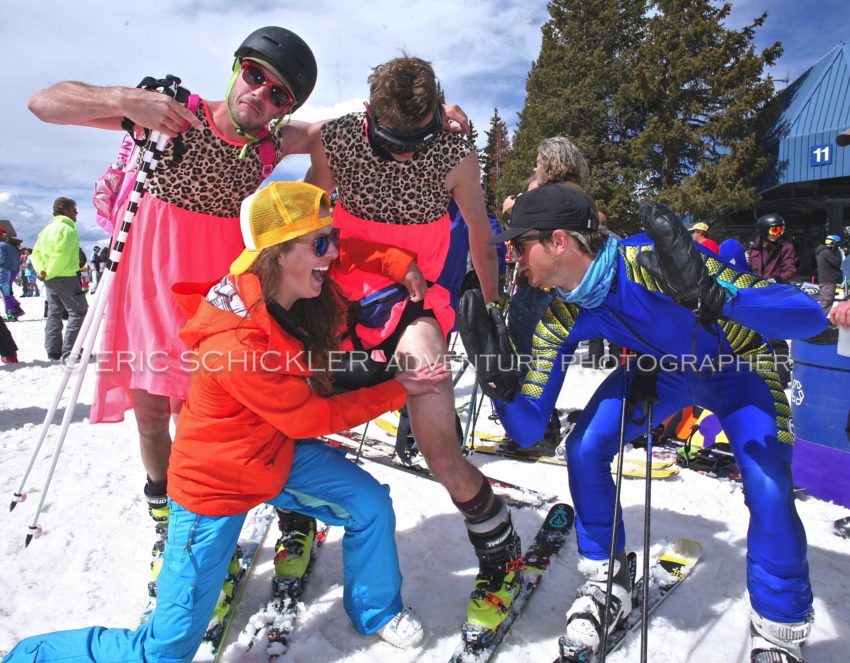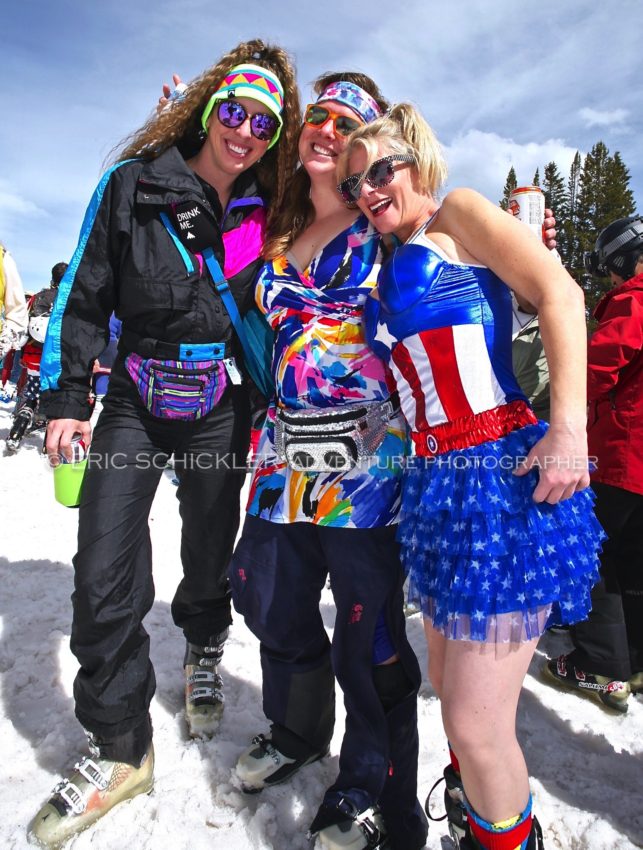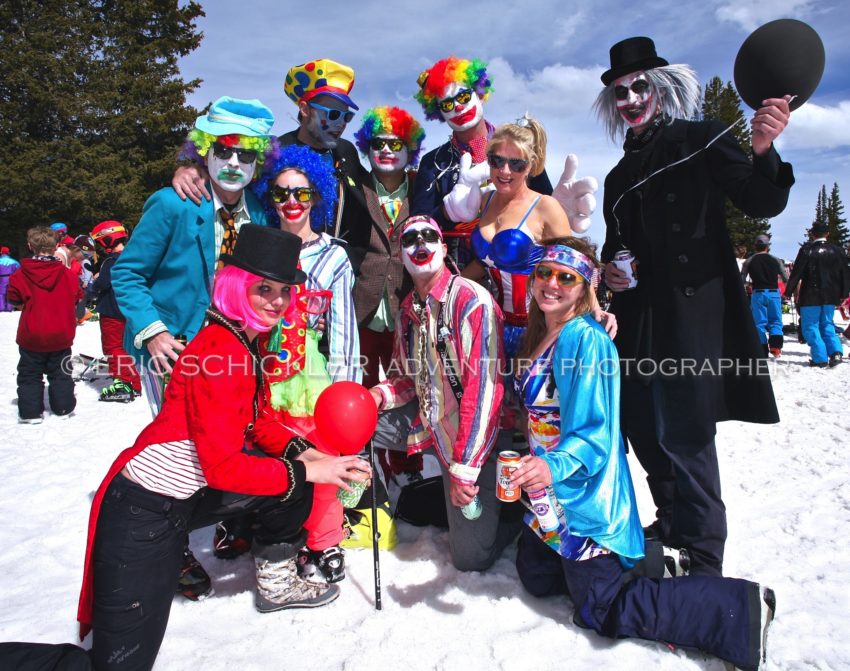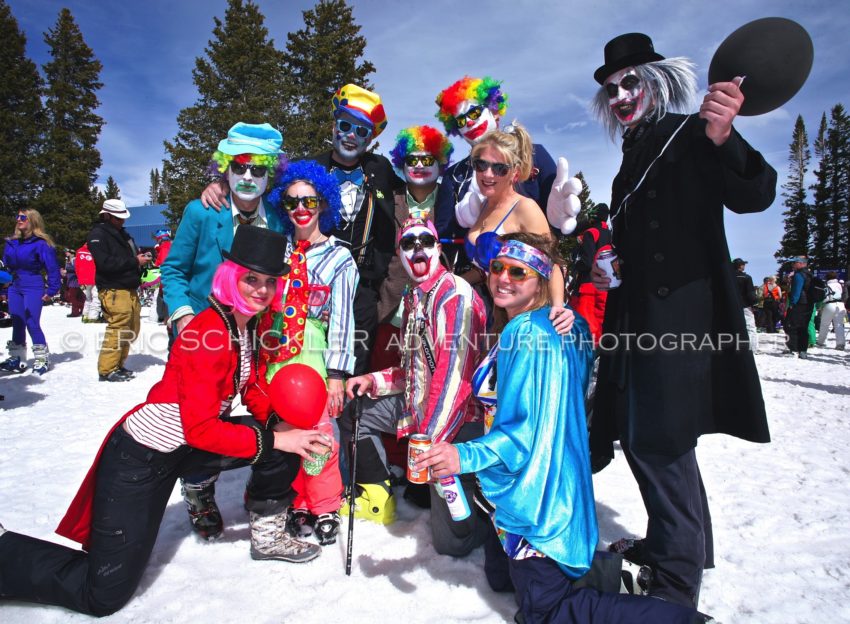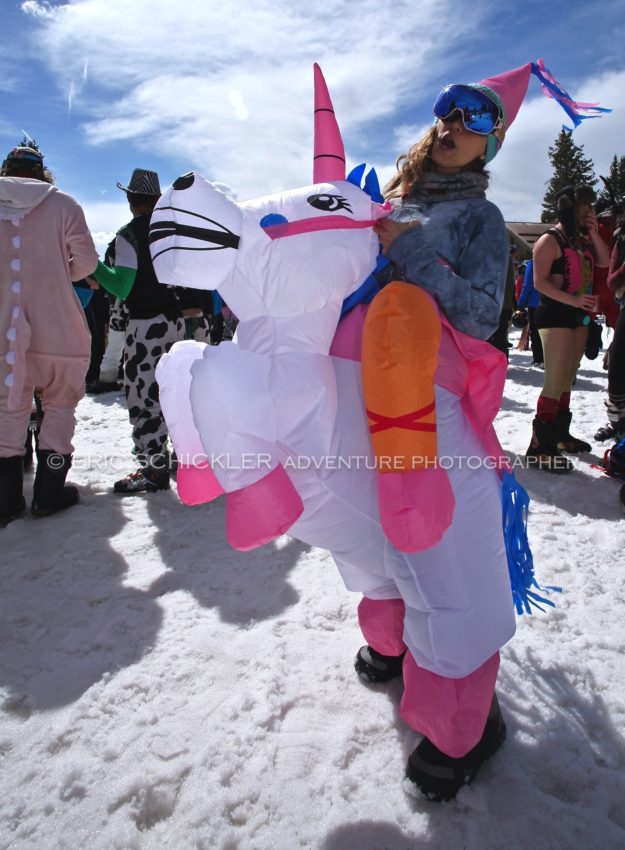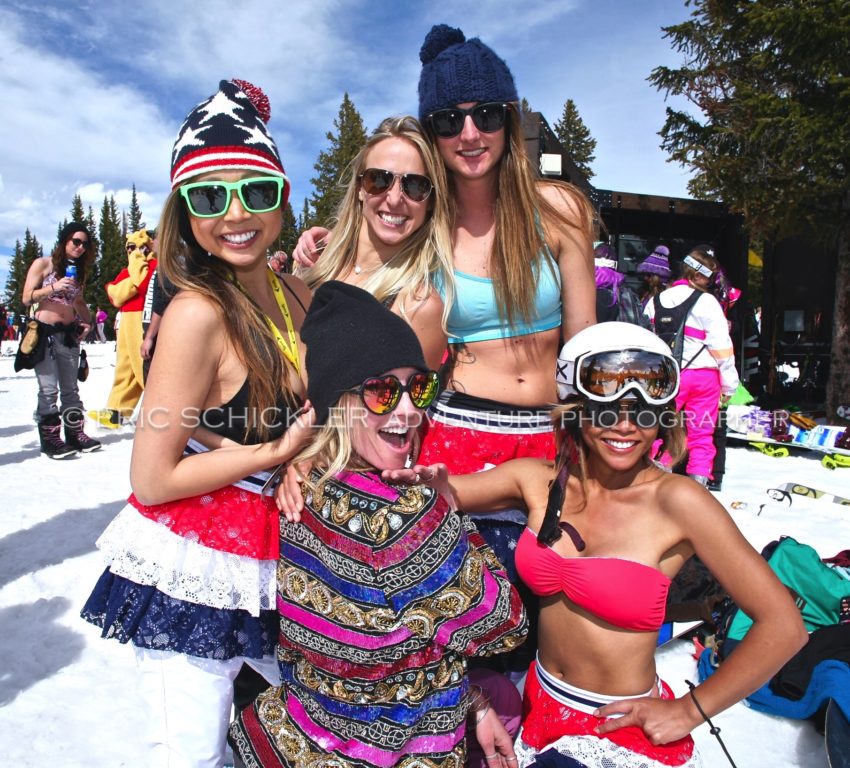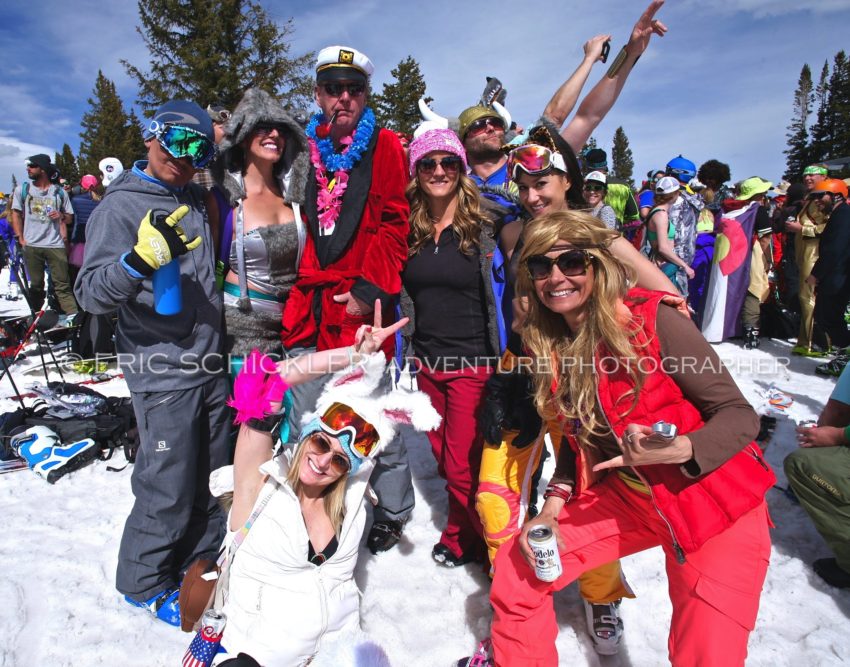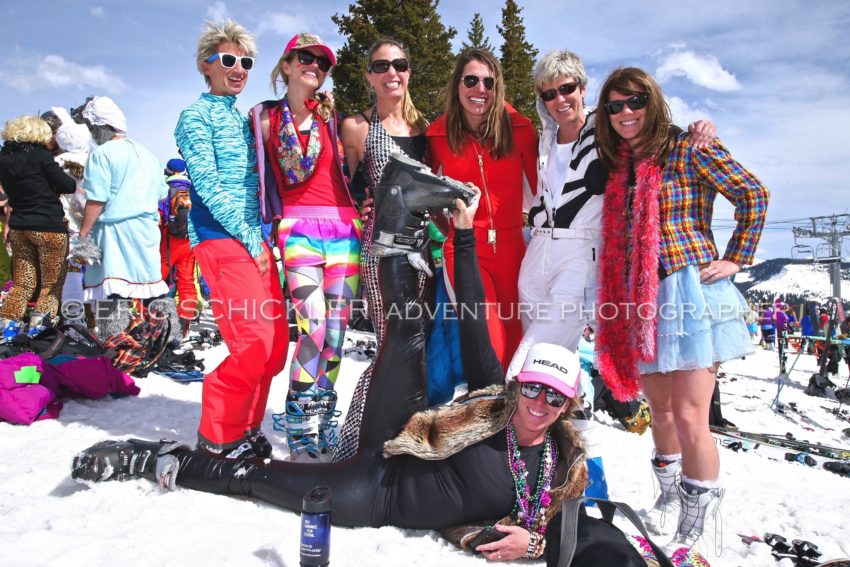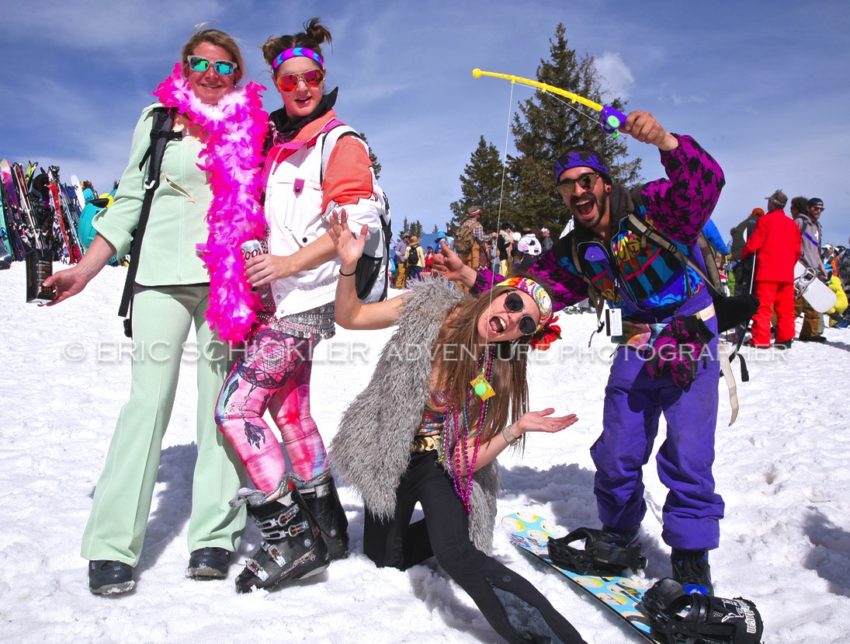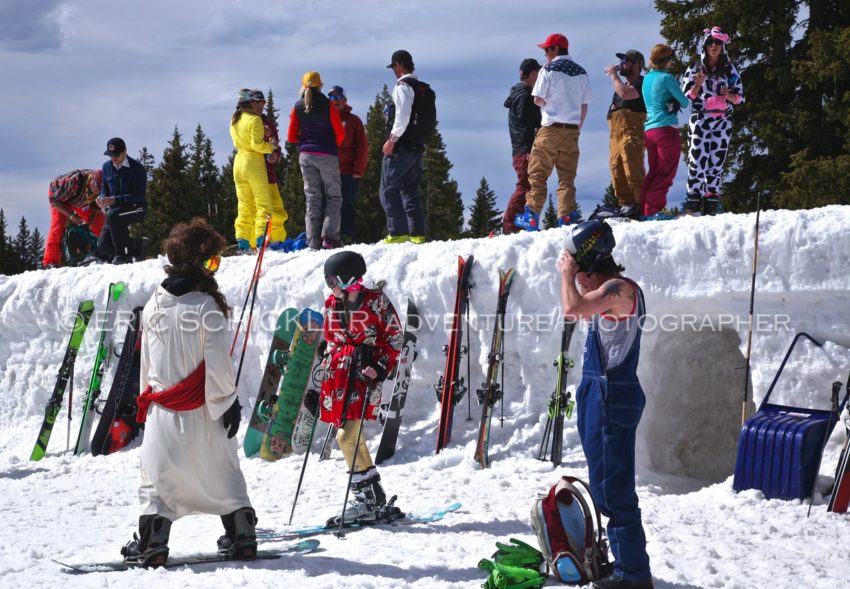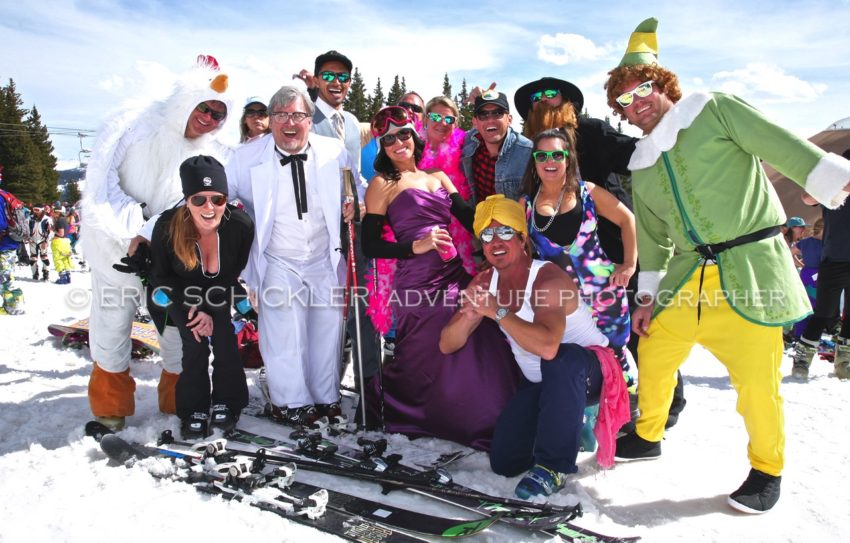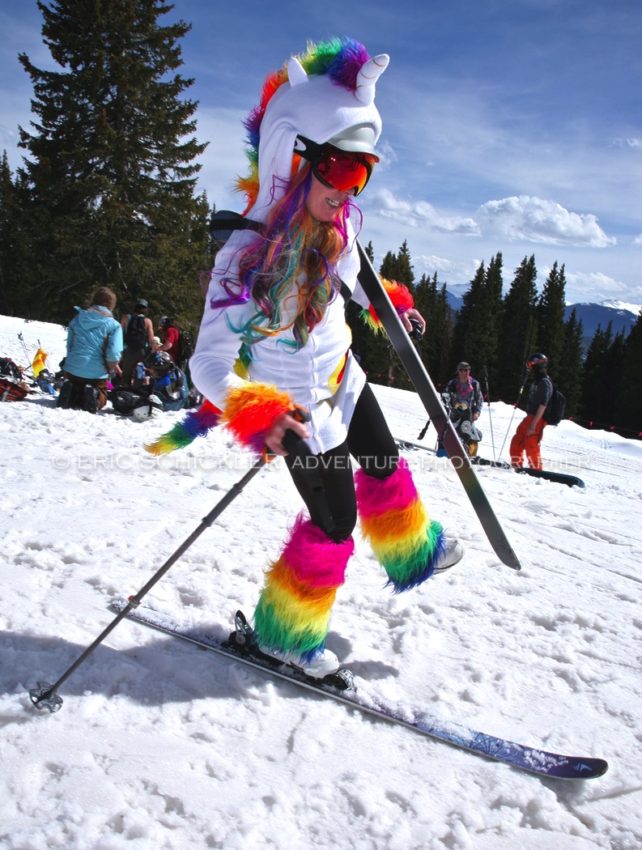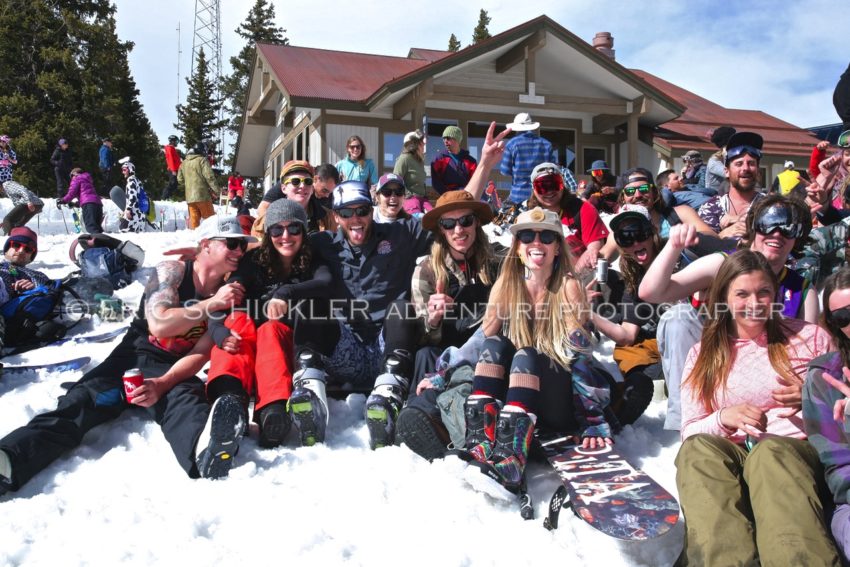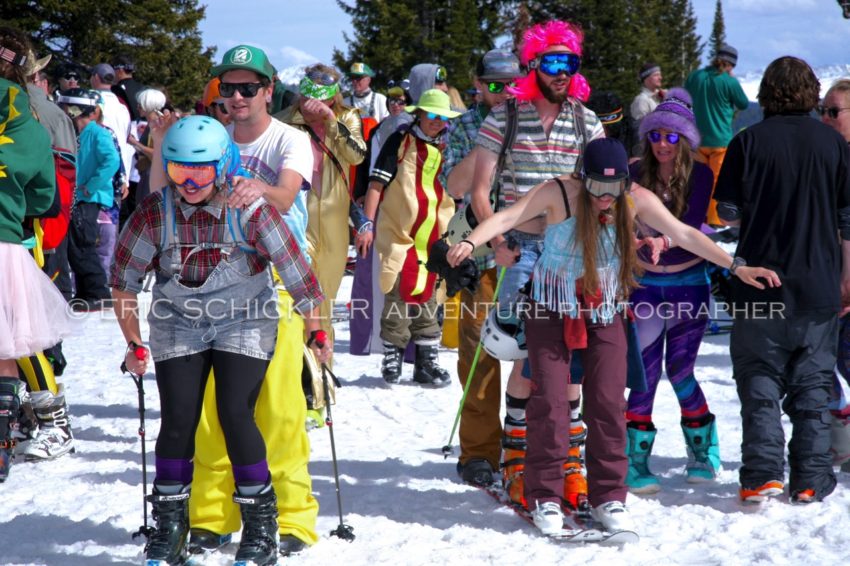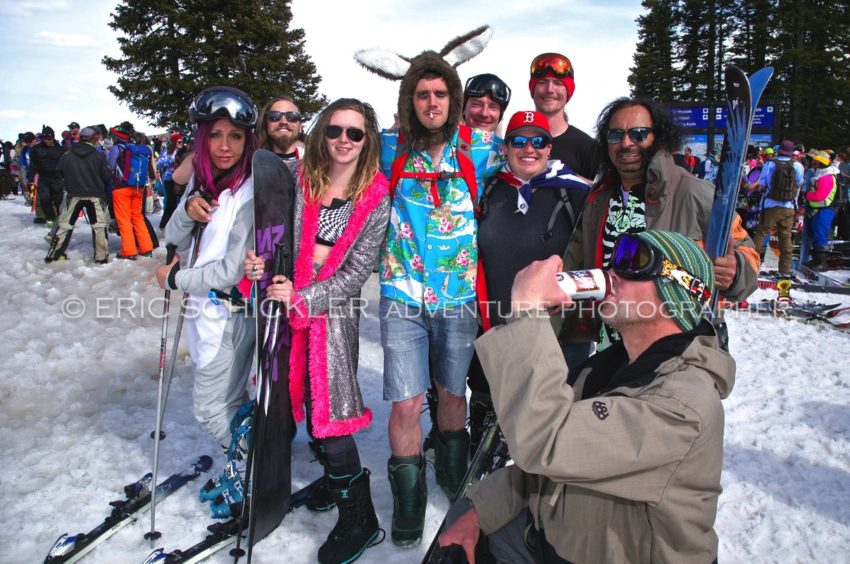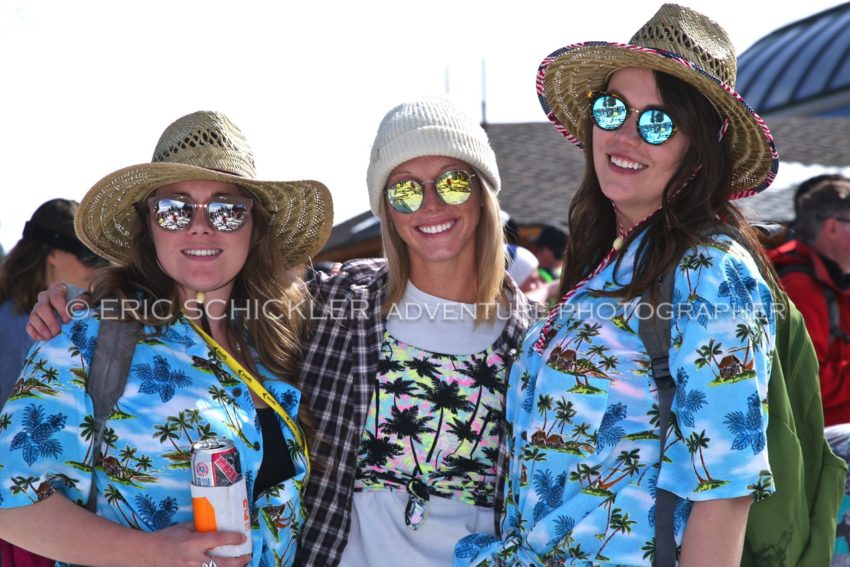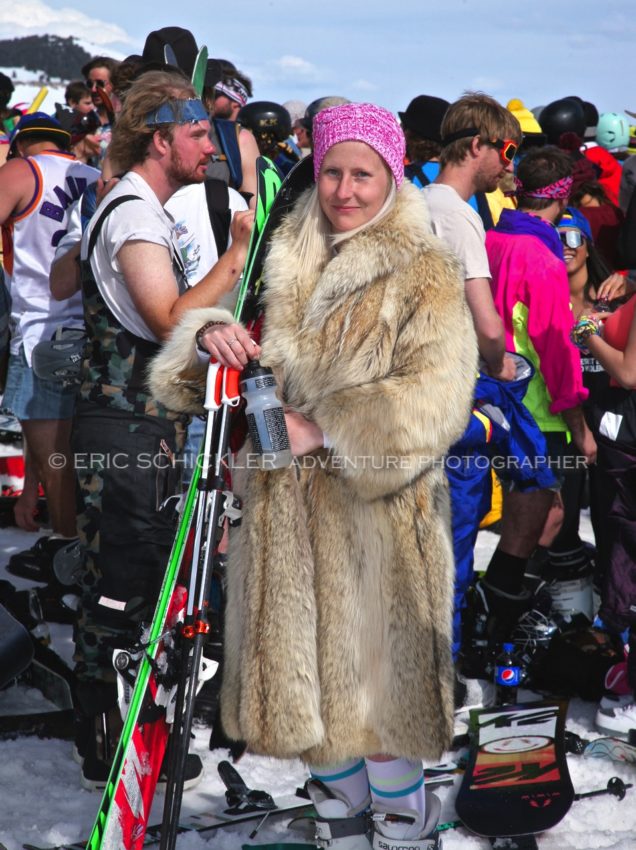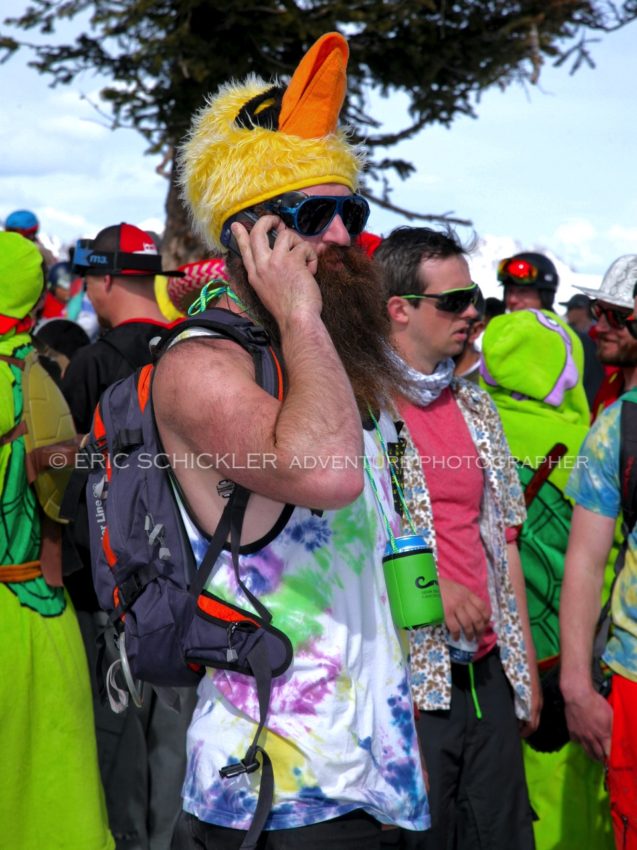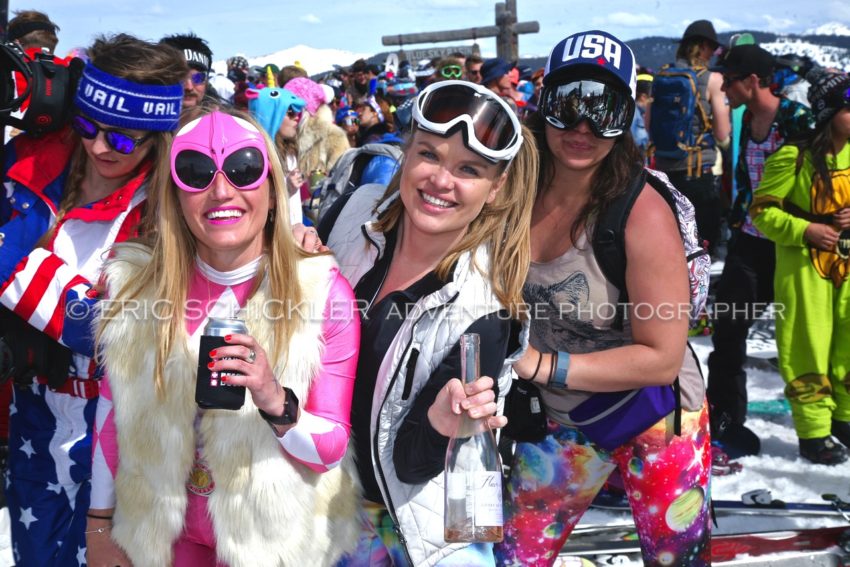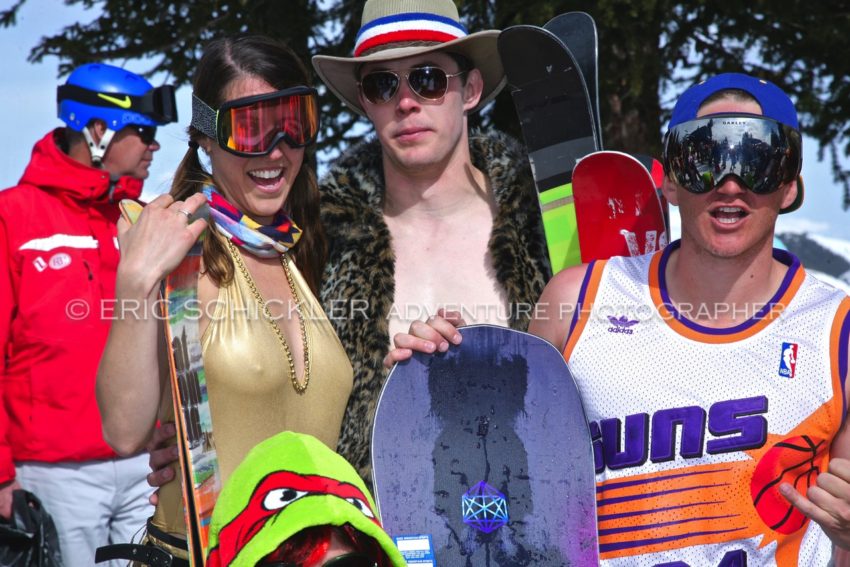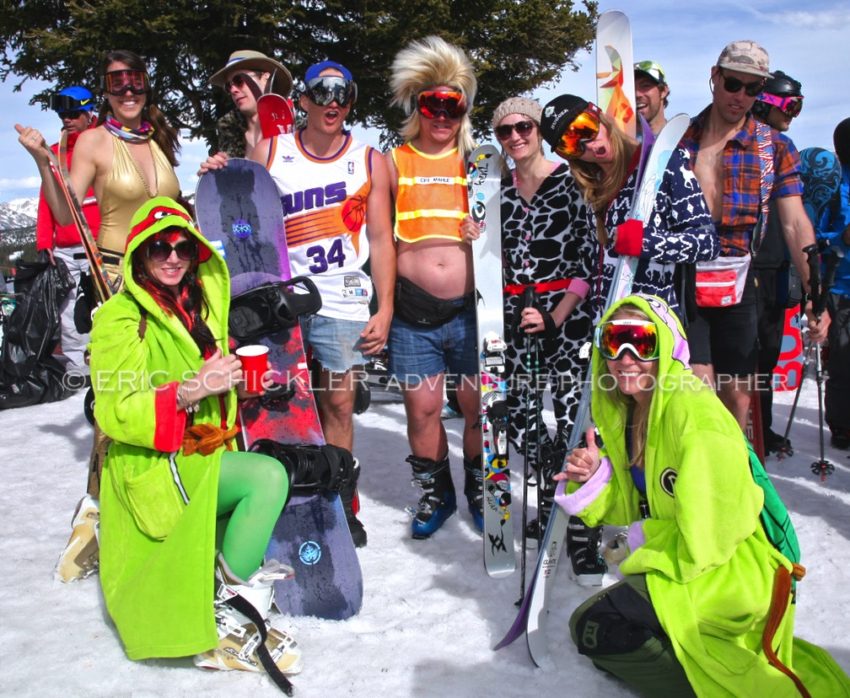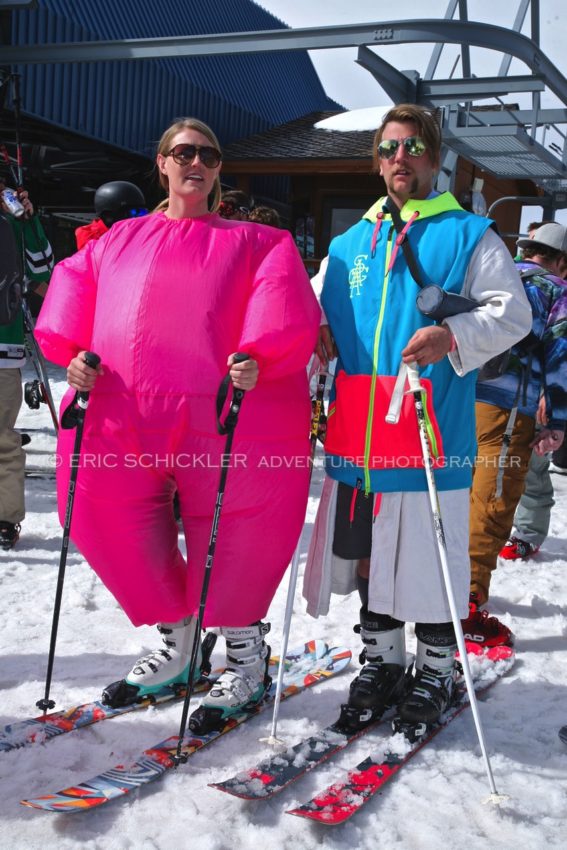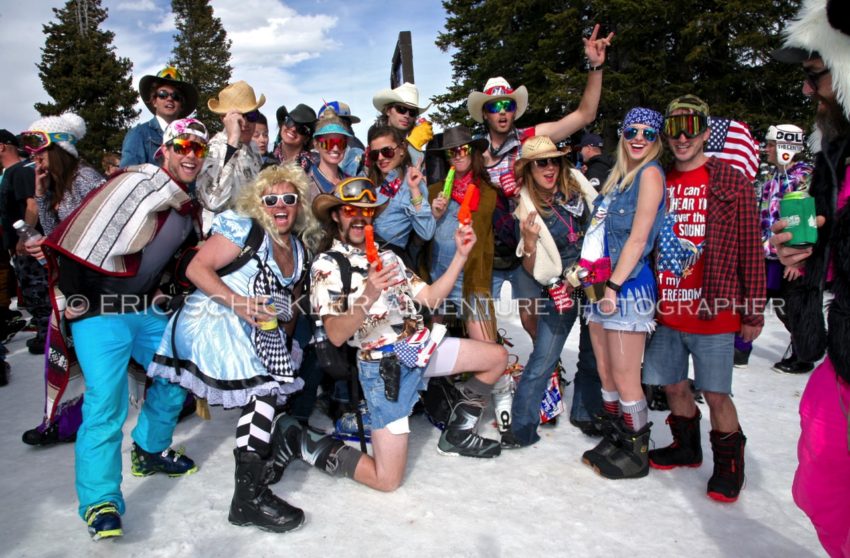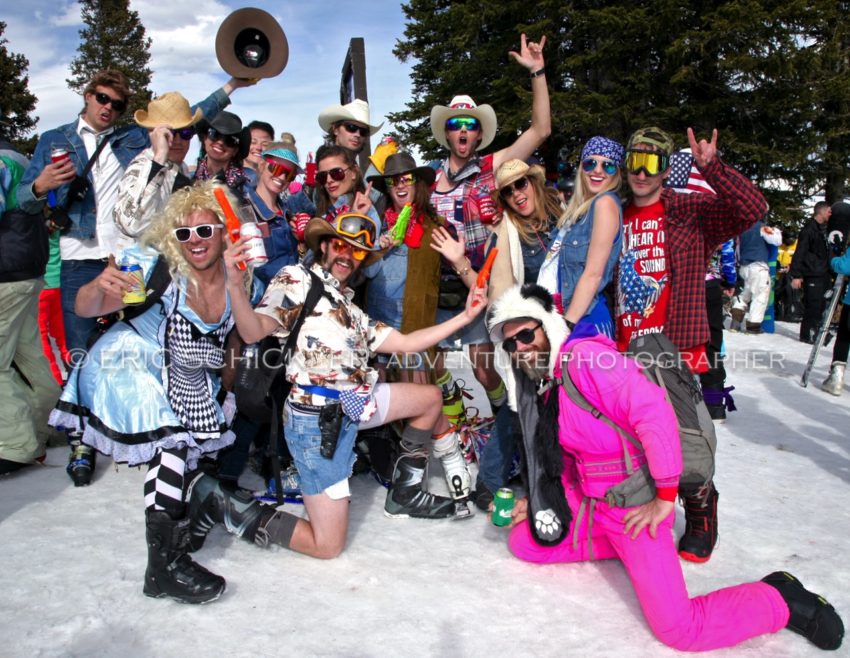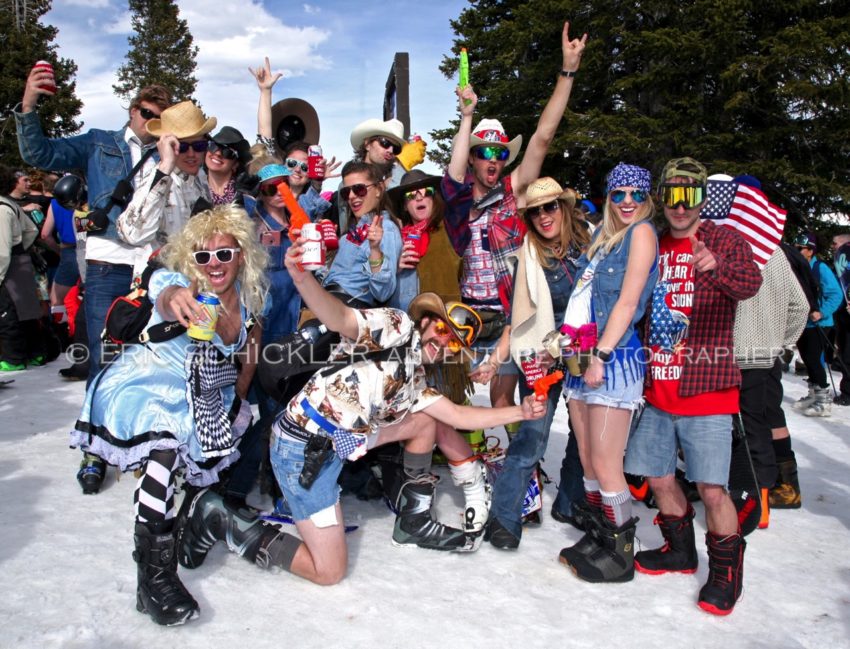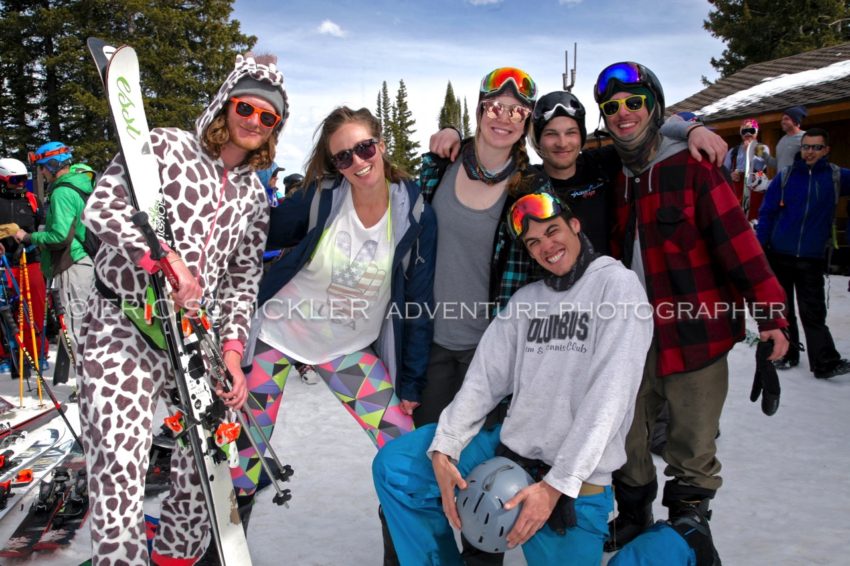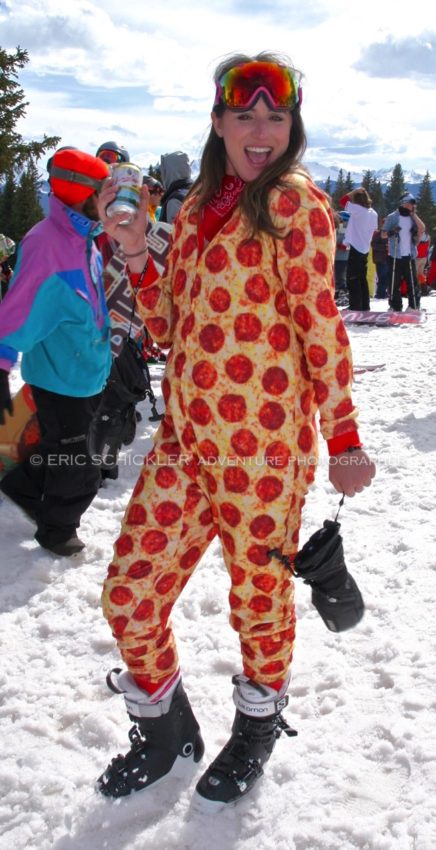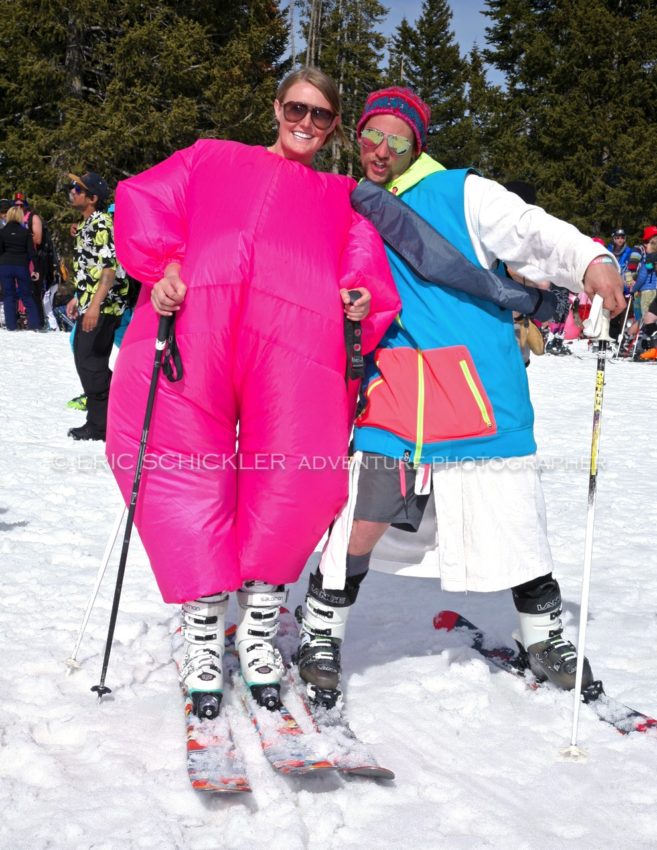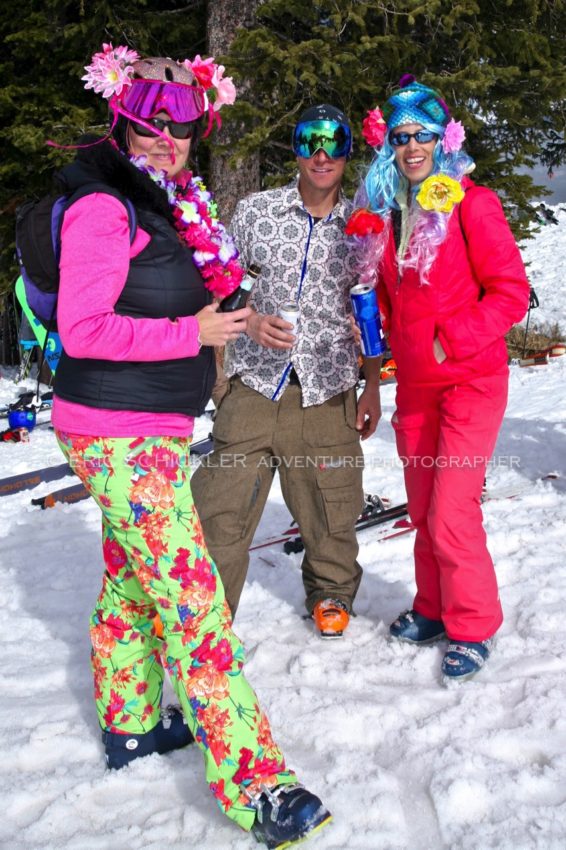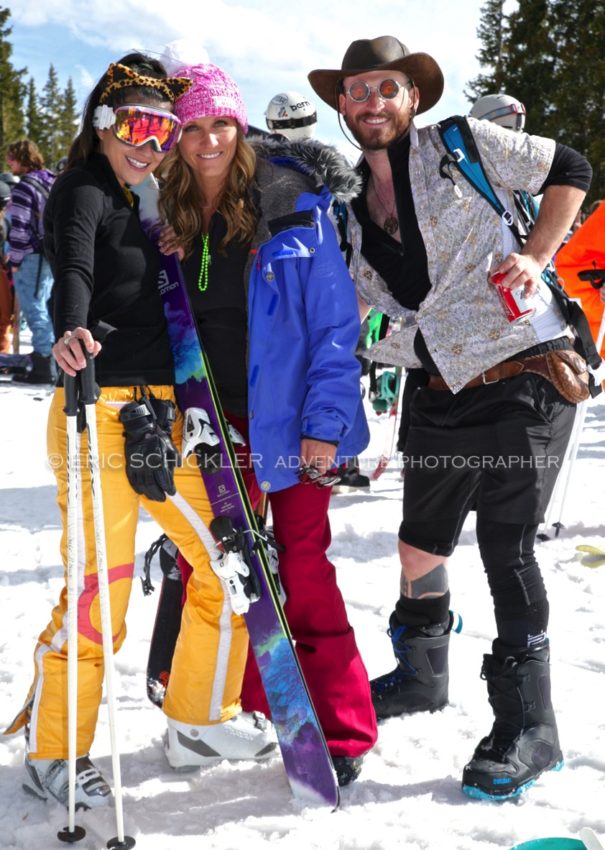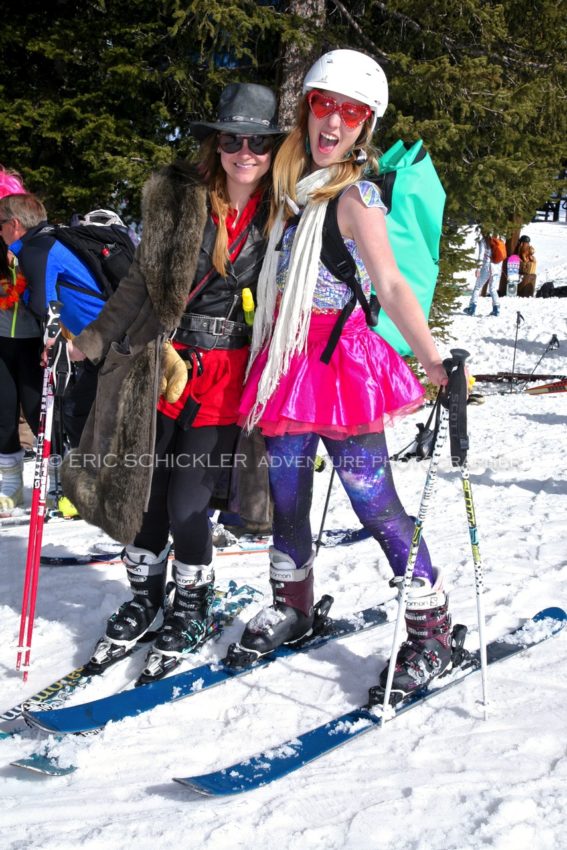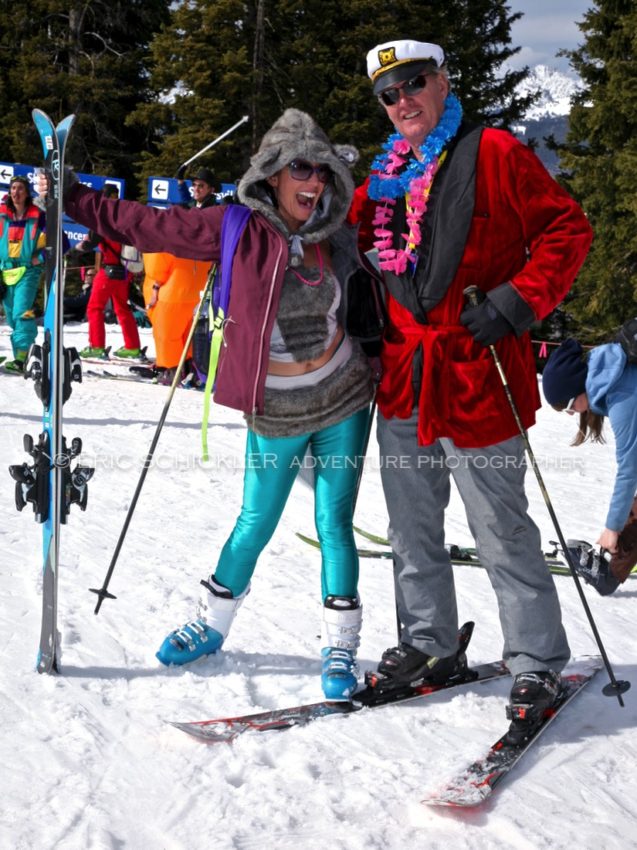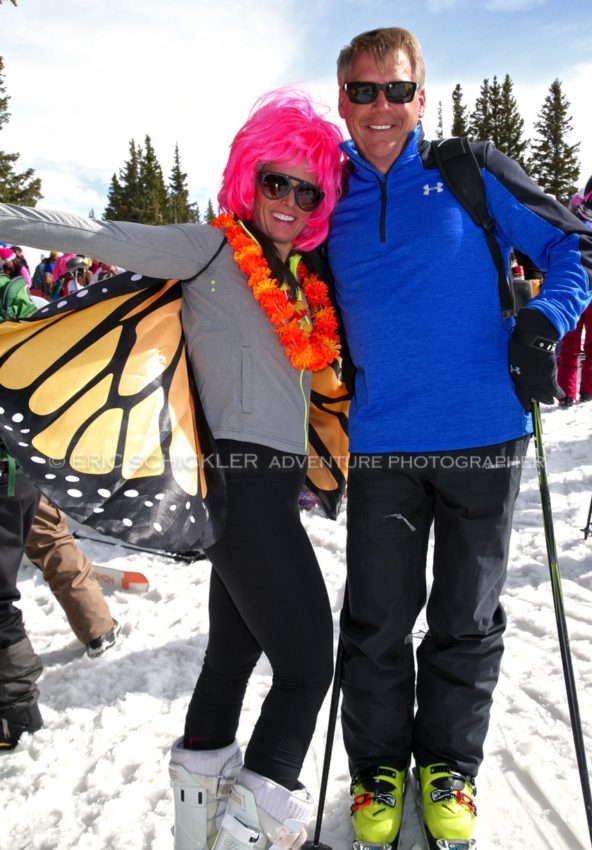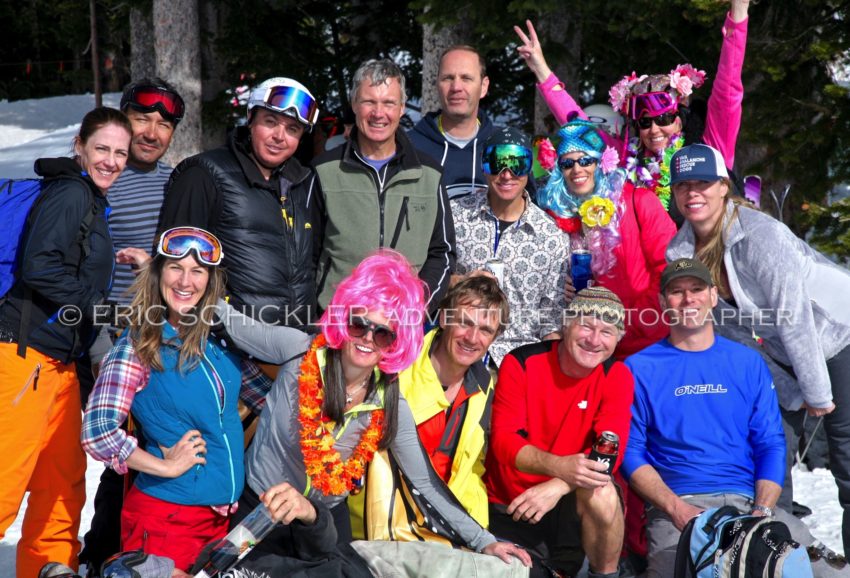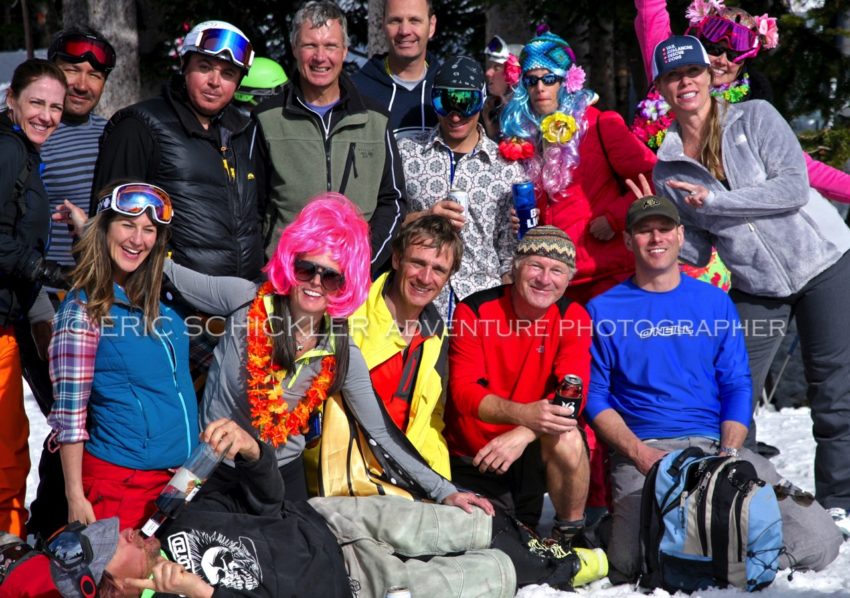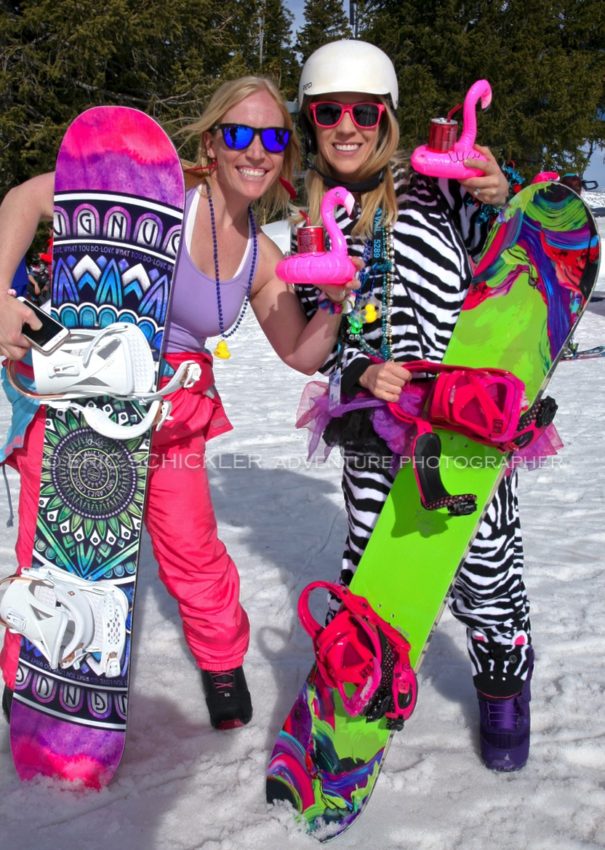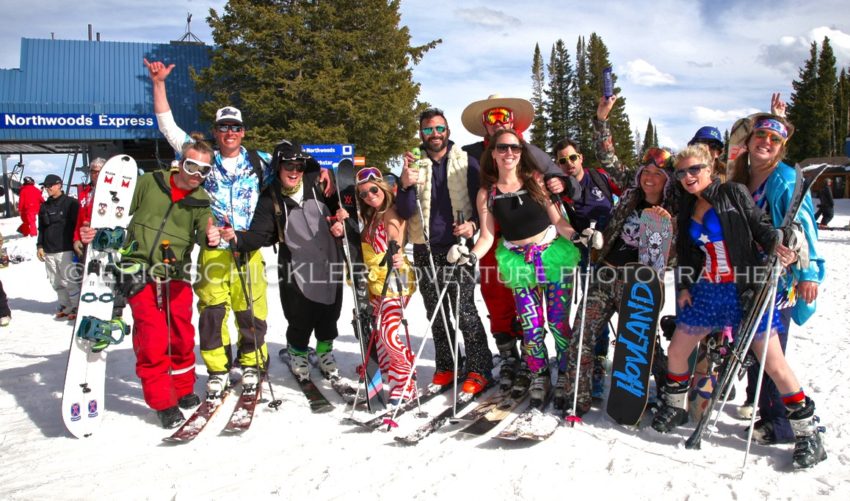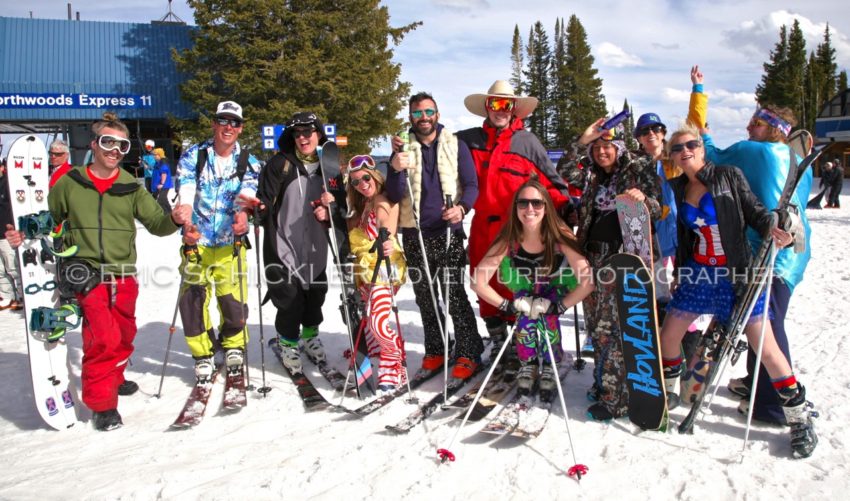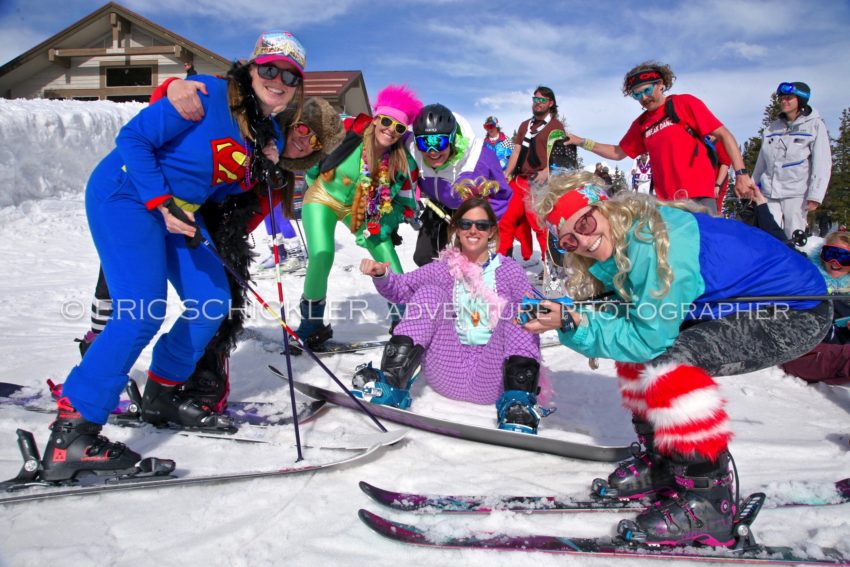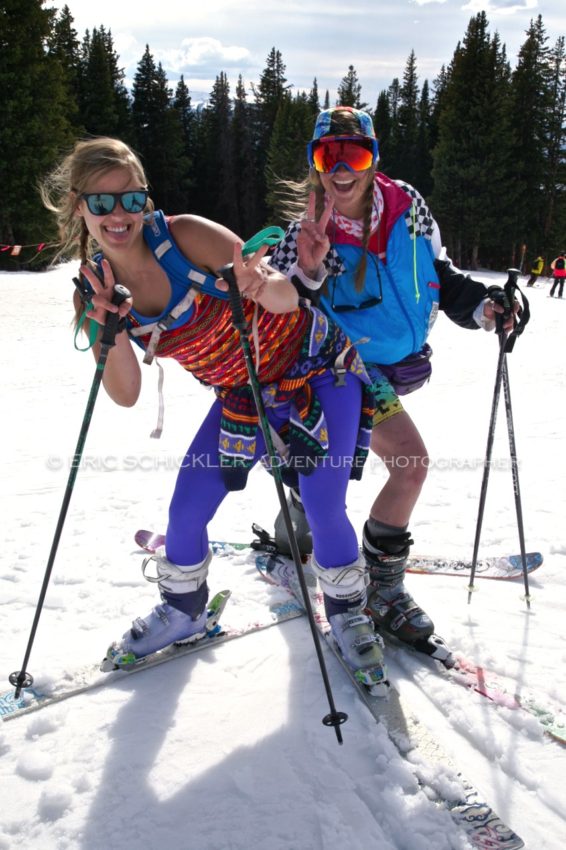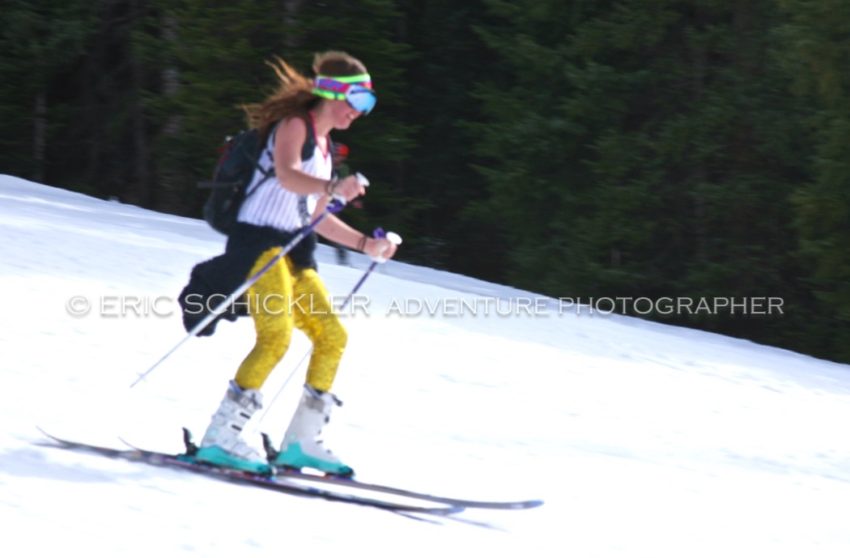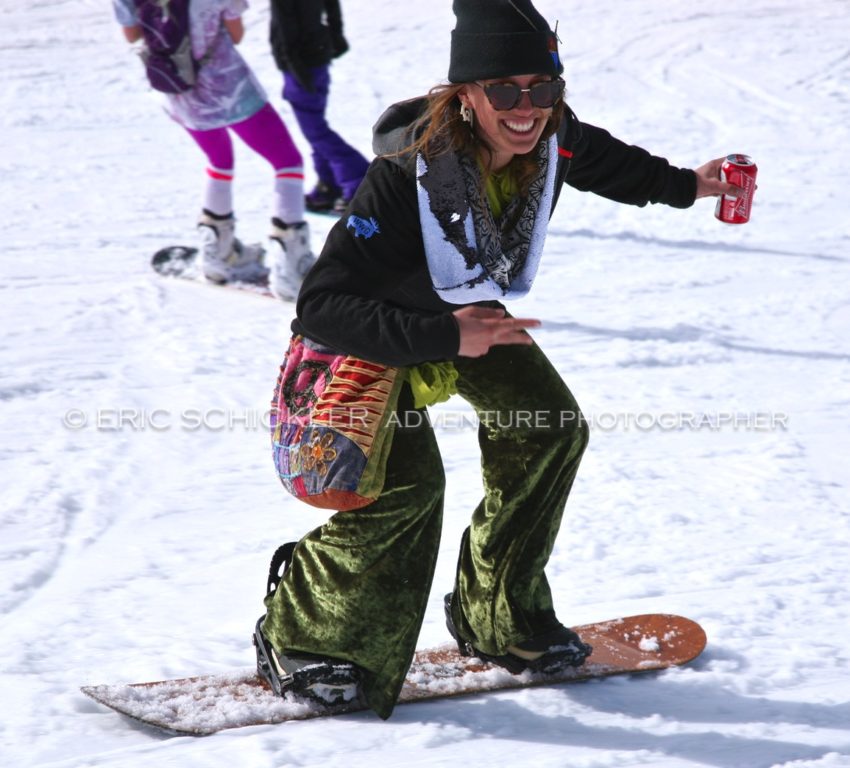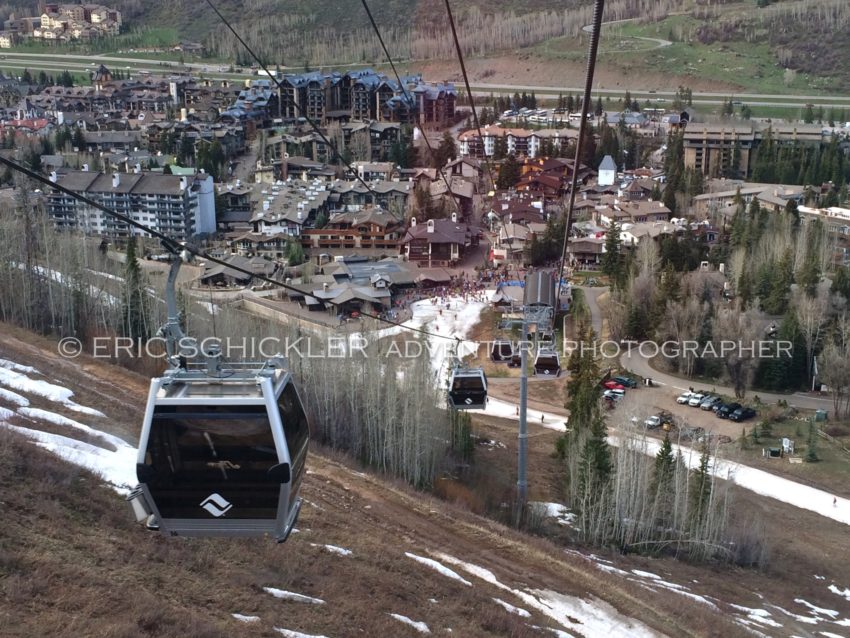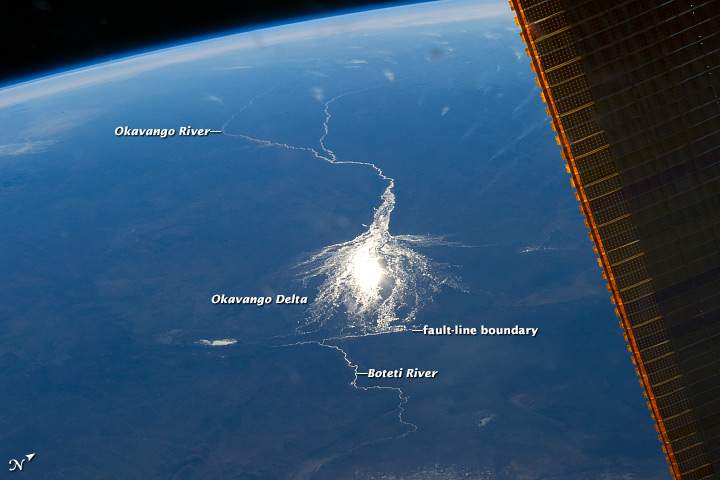Humor
Vail’s Closing Day 2015 Mountaintop Celebration & Pond Skimming Event
Another stellar season at Vail. Not the best year for snow, but the endless parade of activities, events and excitement took the Vail Valley to a new height. The 2015 World Skiing Championships put Vail and Beaver Creek on the international map — again. It was the third time Vail/B.C. hosted these races.
April 19, 2015 – Closing Day was chilly and snowy, so costumed characters were bundled up. But it did not subdue the spirit that only Closing Day can bring. Bittersweet fun and celebration as usual.
_____________
All photos and artwork included in this Web site are copyright-protected and the exclusive property of Eric Schickler Photography. No downloading, use, reproduction, manipulation, sale and/or distribution permitted without express written consent.
© Eric Schickler Photography
________________________________
Bull Elephant Wreaks Havoc on Our African Tent Camp
Okavango Delta – Northwestern Botswana, Africa
October 18, 2007

We’ve all heard the saying. “You can lead a horse to water, but you can’t make it drink.”
While that may be the case in many places on earth, in the cruel deserts of Africa, that rule goes right out the window. Firstly, you don’t need to lead animals in Africa to water. They will go there themselves, often at considerable physical expense. Secondly, they will drink (while watching their backs), and they will stay as long as that water remains.
Each year during the rainy season in the dense highlands of Angola, accumulating waters flow down into the forest valleys and replenish the Okavango River. As the river emerges into northern Botswana and reaches the flat northeastern regions of the expansive Kalahari Desert, the river fans out like a vast tree-root system and forms a huge delta.
This great wetlands is created because a barrier fault line at its southern edge halts any further advancement of the river. Aerial and satellite images illustrate this remarkable aquatic footprint in Botswana.
The renowned Okavango is a rich ecosystem that becomes a mecca for countless animals during the dry season as they escape the heat and parched landscapes of the Kalahari. The lure of this moist refuge creates the largest annual movement of animals on the planet! And in October 2007, we were lucky enough to be part of their welcoming party.
Because the rainy season waters take so long to flow the 315-mile distance from Angola, they arrive in the Okavango during the early months of its dry season (May to July), creating a delayed blossoming of moisture in an area that dries up months earlier.
 At its largest, the Okavango’s flood area swells to over 9,300 square miles (the size of New Hampshire.)
At its largest, the Okavango’s flood area swells to over 9,300 square miles (the size of New Hampshire.)
The Okavango is an oasis for trees, plants, fish, reptiles, birds, amphibians, mammals and the lucky few designated human visitors who can access it on reserved safaris. And the only real way to access it is via small aircraft.
Getting there by plane is half the fun. We were transported there by two rather young, fun-spirited pilots on a six-seat Cessna 206 (called “the Workhorse of the Okavango” for its non-stop ferrying of visitors in and out of the region).
They sure knew how to adeptly float the rising thermals of the African bush. At a comfortable and scenic flying altitude of just 4,000 feet, you can see hippos and elephants below as they migrate to water sources along hippo channels and trails.
Once you get to the Okavango, be ready for the experience of a lifetime, one that few will ever experience. This area is pristine, isolated, and unmatched anywhere on the Dark Continent. There are only a few remaining unaltered wilderness areas in Africa. This is one of the best. Safaris don’t get any better than this. No wonder Okavango visitors rarely offer a bad review of any visit. They get what they pay for, which is a good thing, for the price is not cheap.
Guests at the various camps are strictly limited in number by government regulations. This not only keeps the vast safari concessions areas from being overrun by crowds and vehicles, it guarantees guests an exclusive, incomparable wildlife experience.
The average guest density in the Okavango Delta is just one person per 26 square miles. Some of the very popular safari locations in other areas of Africa, particularly Kenya, can average 40-50 guests in the same size area.
Pom Pom Camp, our destination, is set in a beautiful location on a peninsula overlooking a year-round lagoon in the Nxabega Concession, on the western side of the Moremi Game Reserve.
After touching down on a dry, rudimentary landing strip in the middle of a wet, remote nowhere, my wife Ana and I immediately bathed in the mystique and delight of this location. It was so obvious we were deep inside Africa, and nobody was going to hear from us for several days.
This camp offers an excellent mixed safari experience, where visitors get up-close and personal with game via mokoros (wooden canoes), land vehicles, and motorboats when waters are high. Some limited-range walking safaris are possible, with ample gun support, of course. Night safaris are an added treat, and bring guests into the mysterious world of nocturnal wildlife.
Keeping with the government’s intent to limit visitors, Pom Pom Camp offered just
ten tents, an open-air thatched-roof main lodge, and a few support buildings. We were thrilled to learn on our first two days that just two other guests, sisters from Australia, were at the camp. Things got a bit busier when the “throng” arrived the next day — another dozen guests. There were more staff than guests, so every need was met in assuring a splendid visit.
With gasoline-powered generators serving as the only power source, and Cessna supply drops as the only way to stock it, Pom Pom Camp was nevertheless quite luxurious. Many of the male staff carried pistols, and powerful rifles during safari rides, for obvious reasons. Keeping guests alive and safe from predators was their first and foremost concern. Exquisite food and drinks came second. Should these guys fail in their primary mission, the food and drinks would just go to waste.
It wouldn’t be long before we understood exactly why senior camp attendant Seretse would tightly zip our tent flap at night and remind us that “under no circumstances shall you leave the safety of the tent and venture off in the dark. Should you forget this warning, it might be the last time we see you.”
We found this rule to have profound value, and willingly obliged. So Seretse found us safe, secure and well-rested in our tent each morning when he woke us at 6:30. “Knock-knock,” was his gentle introductory peep. If we were hesitant to stir, he’d repeat, a bit louder. “Uh-hmm. Knock, knock.” This struck us as extremely funny, as there was no wooden door on our tent (obviously), so he found it effective to just speak out the sound.
“Knock, knock. Good morning. Rise and shine. Your coffee is waiting ….. and so are the animals.” We’d poke our heads out from our comfy pillows, and see Seretse’s brilliant grin through the mesh. It was one of the many bright smiles we would see at the camp, and at other stops in Botswana and South Africa. The people appeared full of joy wherever we went.
The juxtaposition of wilderness, wild predators and cushy accommodations was almost humorous. There was a hippo grunting in the muddy water just 20 yards from our tent, and leaving his messy droppings even closer when he roamed around the tent at night.

But inside our tent we enjoyed flip-on lights, high thread-count bed sheets, a cherry-wood bureau, a full bathroom and private open-air shower. The fresh-cut, fragrant flowers were a well-intended nice touch, but let’s just say the hippo droppings won out in the olfactory competition.
The daily pace and environment was generally slow, quiet and relaxed around camp. The excitement happened during our twice-a-day game drives. Cocktail happy hours were very popular with guests, at the quaint camp bar in the afternoon and late evening, around the dipping pool during the mid-day heat, and also out in the bush while stalking game just before sunset.

Our guides, Seretse, Ben, Vasco or Peter, would stop the vehicle and pull out the happy hour supplies: a small table, a festive African tablecloth, snacks, spirits, wine, beer, even ice cubes. When all was set up, and a scan of the area for predators was done, our guides would flash their big bright smiles and announce: “Time for a “sundowner.” Fortunately this relaxing social event was never upended by an unexpected raging animal.


The episode that follows starts out as a storybook African vacation experience, the setting painted through this introduction. But the story quickly turns into the startling reality of being face-to-face with one of Africa’s fabled Big Five predators, with practically nowhere to hide.
We had returned to our fortified tent to relax after a busy morning of game rides out in the African countryside. We got our money’s worth on the very first tour: spotting fish eagles, king fishers, birds of all kinds, exotic frogs. We saw ridiculous numbers of wildebeest, giraffe, baboon, zebra, hippo, warthogs, crocodile, waterbuck, kudu, warthog, impala, and a variety of antelope (including roan, sable and sitatunga).
Then there were the animals you didn’t want to meet up close: predators like lions, cheetahs, leopards, hyenas, cape buffaloes and wild dogs.
Ah yes, and one more. I almost forgot. (No I didn’t.)
I will never forget that other dangerous species, which commands the greatest attention because, well, they are rather hard to not notice. And because one of their bodacious centurions left a big impression on me and all the others at Pom Pom Camp.

We were off the safari truck and relaxing back at camp, but the animal interaction was far from over. It was all around us at the camp. Hence the necessity for gun-toting escorts to and from our tent and the main lodge each evening.
As we lounged in and around our tent on that warm lazy afternoon, off in the distance in the delta waters, right there in our own slice of solitude, emerged a very large bull elephant. He was rummaging through the delta, slowly making his way toward us as I watched, amazed. He was doing what male elephants routinely do in Africa: soak themselves in the water and the mud, show off and generally express their macho dominance and authority to the hapless camp guests. It was his opinion, and a correct one, that we were new to the camp and needed to learn whose playground we were in.
As a photographer, this was the most wonderful scenario I could imagine. We spent four hours on our morning ride, several miles from camp. We saw plenty of wildlife, but it required plenty of driving around looking for those animals, and me training my long camera lens in the distance for the photos.
But now here we were, just hanging out at our own little tent-side oasis, enjoying cold drinks after taking cool showers. I was still clad in a towel on our deck, facing the delta, not too concerned about the dress code here deep in the African bush, when I spied him off in the distance.
Running for my camera gear, I nearly lost the towel twice. Fortunately, my wife, our local hippo and this beast were the only living creatures with a view. Needless to say, modesty was not an issue at this point.

The stare-down from a distance.
After bathing and spraying himself in mud and generally showing us that this was his own private muddy bathtub, the elephant resolutely decided bath and shower time were over, then matter-of-factly turned on a dime, looked directly at me–the tourist photographer–and rambled my way. Rather resolutely. Rather directly. Even from this distance–some 250 yards–I could see he was staring me down.
Ana was in the tent doing something, perhaps writing some postcards. I set the camera down on the table, and issued my first “Elephant Approaching!” warning of my life.
We retreated quickly to the tent, hoping what camp manager Niles said was true, that the elephants won’t attack you in a fortified tent.
We found the exact epicenter of our shelter, believe you me. And we stood there, kind of holding each other, hearts pounding, adrenaline pumping, and beads of sweat emerging on our foreheads. We waited to see if that monster was going to crush our meager dwelling, and us with it. Please, no. We just got here. The postcards aren’t even written!
Then he moved insanely close to the tent–just ten feet–and walked slowly alongside it. With our breathing in suspension, our eyes followed four tree-trunk legs as they lumbered past the windows of the tent. All we saw were knee caps and calves, as we stood motionless with our hands over our mouths.
Fortunately he was more interested in munching on the tree branches next to our tent than on us. We scrambled to the back of the tent to the open-air shower, and from there saw the top of the beast. We felt great relief as he ambled away from our tent and down the camp trail.
We dodged a very big four-legged, one-trunk, two-tusked bullet, and congratulated each each other on the fine African adventure we had just survived. Then it dawned on us that he was now heading toward other tents and the main lodge. We sensed that other guests were about to get their own rush of adrenaline. Or something worse. It was now obvious we were just the first stop on his afternoon rampage around Pom Pom Camp.

Keeping a safe distance, we followed him toward the main lodge to alert the staff. The pesky pachyderm disappeared somewhere, so we figured the scare was over and we headed to the dipping pool for relief from the hot temperature and the burning excitement. Sipping cool drinks, in cool water, we marveled at this surreal experience, and blood pressure returned to normal–for all of 15 minutes.
Then suddenly he was back! I dropped my jaw and my drink as he sauntered just 15 yards from us, along the path on the other side of a ridiculously flimsy (ergo, useless) fence around the pool. I pondered how its ornate, decorative woodwork might merely serve as a quaint frame around our trampled bodies. “This is insane,” Ana yelped.
Amazingly, the elephant ignored us, more concerned about those yummy succulent upper branches on the nearby tree. The camp manager screamed a few choice African obscenities at the beast, angry that the nearby foliage was progressively diminishing as the tourism season wore on.
A woman visiting from Paris was cursing at the beast in French, (I’m not sure what language the elephant preferred) and she screamed something to the likes of “Holy Toledo, Pierre!” at her husband, who was oblivious, butt-naked and vulnerable in his tent’s outdoor shower, just steps away from the uninvited monster.
“Pierre, Pierre, Pierre… get out of there!” she screamed. Then I think she said: “EXIT-vous, tout-suite, tout-suite, you idiot. You are going to get trampled to death!
E-L-E-P-H-A-N-T!”
It was such an elegant, righteous accent, sounding a touch romantic, as only the French can sound, even when they are cursing. I thought Pierre was about to lose his towel too.
Shortly thereafter, I decided I’d accompany the camp manager, Niles, and another guest, Summer, a very nice young woman from Australia, to her tent to fetch her bags. She was to hop the puddle-jumper Cessna in an hour, headed to another tent camp a few hundred miles away.
I knew the elephant was over near her tent, and I grabbed my camera equipment hoping for yet more photos of the camp tramper. I remained in the Land Cruiser when Niles and Summer went to get her bags. Suddenly it was way too quiet. And I felt alone. By golly, I was alone. And awkwardly vulnerable, and feeling silly in very rear seat of the multi-seat safari Land Cruiser, nervously waiting longer than I wanted. “Where the heck are they?” I mumbled.
Then my thoughts turned to the beast. Where was HE ?
Suddenly, I heard screams and shrieks emerge from the tent, then saw two of the camp staff ladies, clad in their proper African camp garb, running for their dear lives…like their pants were on fire. But they didn’t wear pants. I’ve never seen ladies in African dresses run faster in my life. Wait, this was my FIRST time in Africa–I had NEVER seen African woman run, period. They were screaming and running and fluttering their hands like NFL officials at a playoff game. It was the kind of evasive action people take when they come upon and disturb a bee’s nest. I wondered, “Holy moly, what’s going on now?”

With the ladies long gone across camp grounds, I peered back over to the tent where Niles and Summer had disappeared.
Then the bushes started rustling and out of nowhere came the giant, with all due haste. He was snorting and thrashing and moving faster than a locomotive, and he was looking at me–again. Dammit.

The charge.
Never in my life have I felt more raw emotions at one time. Despite the eye-popping emotions, and the realization that my life was just about over, I fell back on my photographer’s instinct and reached for my camera.
What a shot this would be, I mused. And sure enough, that’s all I had time for–ONE SHOT. I tossed the camera aside and looked at the driver’s seat, three seat rows in front of me. Then ominous dread befell me. It is my time–RIGHT NOW–my time to quickly learn how to drive like a postal delivery dude, because this vehicle had a right-side steering wheel!
Are you kidding me? How the hell do you drive from the right side? And what a time to figure it out. Too late, he’s getting really close. Time for Plan B. I recalled Niles telling me that elephants will usually avoid coming right up onto a truck. Usually? Heart pounding, I trusted in ol’ Niles and chose plan B.
I jumped into the middle seat of the Land Cruiser so I’d have a sporting chance of not dying as quickly when the humungous steamroller crushes or rolls the vehicle, or simply gorges me with his huge tusks as I try to protect my expensive camera gear.
It was just like the cliche cartoon where a dynamite stick fuse burns down, and the poor fool stuck next to it sweats and says his final “Hail Mary.” I prayed to every god there ever was–the one I believe in–and all the African gods too.
And then he swung his trunk around a final time, snorted again, and–thank you African gods–stopped abruptly just 15 yards from the Land Cruiser. When the dust settled, I swear he winked at me, laughed at me, and made a right turn toward some delicious trees in the distance.
A few minutes later, still gasping for breath and thinking about the sudden need for a pacemaker, I noticed Niles and Summer gleefully skipping toward the truck with her luggage.
Niles threw the bags on the truck, started it, and glanced over his shoulder. “Sorry we took so long. By the way, did you see that elephant?”
“What elephant?” was my reply. Then I laid down across the back seat, hands over my face in stunned disbelief at all that had transpired in the past two hours. “Can we start happy hour a little early today, Niles?”

________________________________________________
Pom Pom Camp Web Site: http://www.pompomcamp.com/
Pom Pom Camp Photo Gallery: http://www.pompomcamp.com/gallery.php

The author and photographer, safe for now in the comfort of the safari truck. Until the next predator arrives.

If you liked this post, check out these Africa photo posts:
Africa: Botswana & South Africa Part I
Africa: Botswana & South Africa Part II
Eye to Eye with an Alien
Katy Couldn’t, Katy Could, Katy Didn’t, Katydid!
I’m not a big fan of creepy crawlers. Insects can become frightening monsters when viewed up close, when magnified by camera lenses or filters. You’ve seen the alien-like photos. Parents know not to show these images to their children before bedtime, or they’ll pay for it.
Sometimes, in the spirit of photographic documentation, I force myself to look beyond my fears, and capture images of nature’s small aliens.
The leggy green creature you see here caught my attention early one morning after I moved a large potted plant inside the house for the autumn and winter months.
This leaf-like bug had enough appendages to outperform any one-thumb hitchhiker you might find along the highway. But instead, he found himself unknowingly transported in piggyback fashion to a warmer climate inside a house. No need to use his many legs or wings to flag down a vehicle; he just needed to hang on tight for the ride.
As I moved the plant into a corner I came face-to-face, and bug-eyes to blue-eyes with him. After jumping back a few feet in total surprise, I eventually gathered the courage to introduced myself.
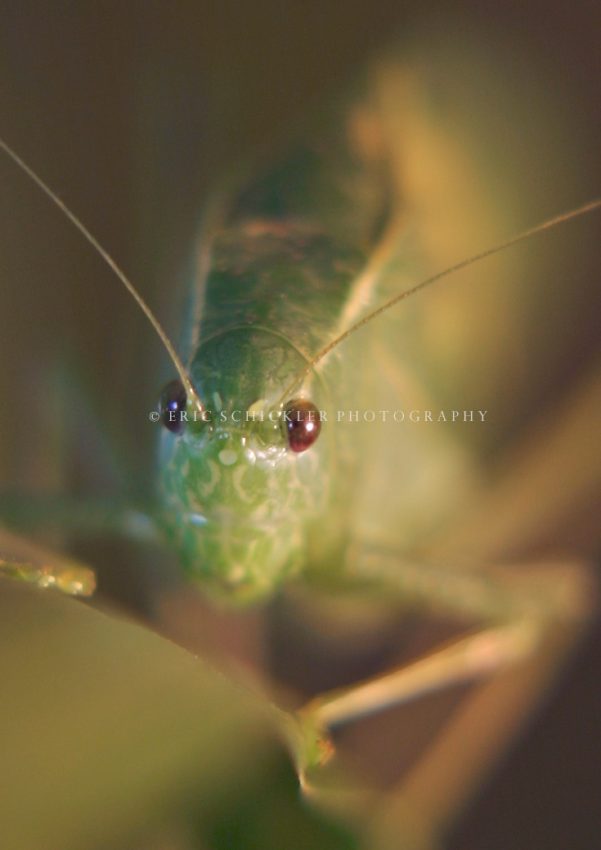
It was then that I recognized his eerie beauty, and asked if he’d be willing to pose for a few photos. Getting no auditory reply, I took his gentle antenna movements as an ambivalent “yes,” so off I went for my close-up filters, camera and tripod. I then arranged a red cloth as a backdrop for complementary color accent.
Two hours later, I had these images.
Yes, I know. I am easily distracted. Who could have predicted I’d be finishing my last cup of coffee with this type of unexpected visitor? While he was no conversationalist, he sure beat the unwelcome door-to-door solicitors who canvassed the city neighborhoods each day.
And how can you not love a face like his? I’m not sure who was more intrigued, me or him. He stared at me, and I at him. He’d move slowly down the long green reed and I’d follow, repositioning the tripod from another angle. Of course I chatted quietly with him all the while, trying to make him feel comfortable, and loose, and acting like himself, as I do with any subject in my studio.
I didn’t realize until recently what kind of insect this was. At first I thought he was a cicada, or a locust. He didn’t appear pious enough to be a praying mantis, and because he didn’t just hop away to freedom, I knew he was no simple grasshopper.
I wanted to understand who I was looking at for so long that late October morning in Denver. I had to know! If I could, I would. I knew I should. So I did. And I’ll be darned, he was a katy, a katydid.
A relative of the cricket, and less-so the grasshopper, these primarily nocturnal crawlers resemble their leafy surroundings so closely that during daylight hours they are rarely detected. They get their name from the phonetics of the male mating call, which folks who study insect noises say is: “katy did, katy didn’t.”
I find it ironic and funny that such ambiguous uncertainty, this case of “he said, she said,” or “she did, or said she did, but maybe she didn’t,” is related to mating activity. Do insects fake things to appease or mislead their mates? Or accuse them of such things? Or question their mates’ stories about what and what didn’t happen during you-know-what? Maybe insects aren’t that different than humans.
Regardless of all that, I cannot recall any subject remaining so still during a shoot. For that I paid him extra: a piece of spinach and a small brussels sprout from the fridge. Much tastier than the plant he rode in on, and perhaps his version of “turning over a new leaf.”
I have to say, my new little alien friend was so well behaved, I moved a step closer to being more comfortable photographing insects. But before you liken me to Prince Valiant, remember: I know there’s always that camera between me and alien. That is my security.
If you are wondering, I refrained from letting him stay in the house all winter. He was escorted out soon after the photo shoot, after signing the model release form.
___________________
All photos and artwork included in this Web site are copyright-protected and the exclusive property of Eric Schickler Adventure Photographer. No downloading, use, reproduction, manipulation, sale and/or distribution permitted without express written consent.
© Eric Schickler Adventure Photographer
___________________
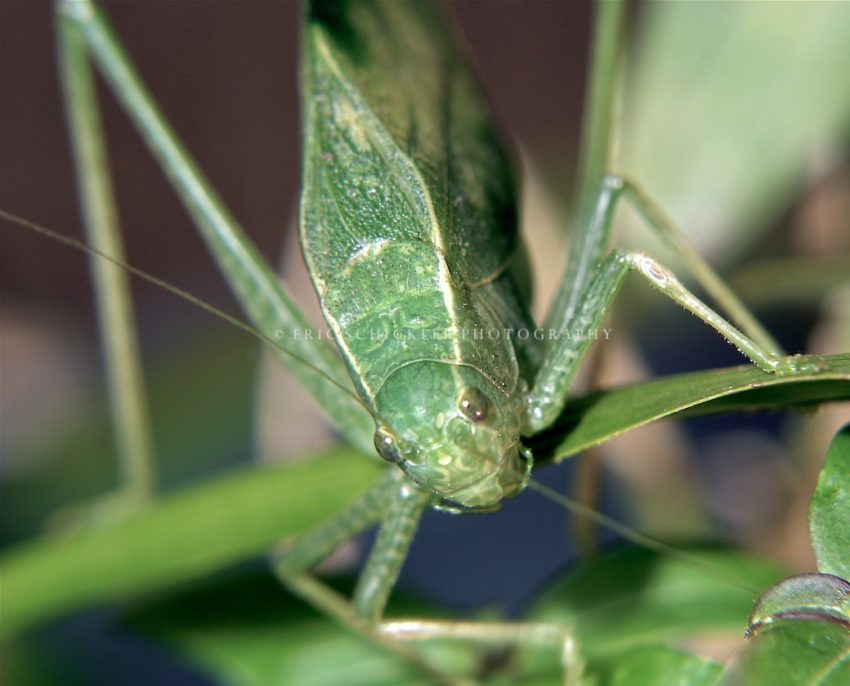
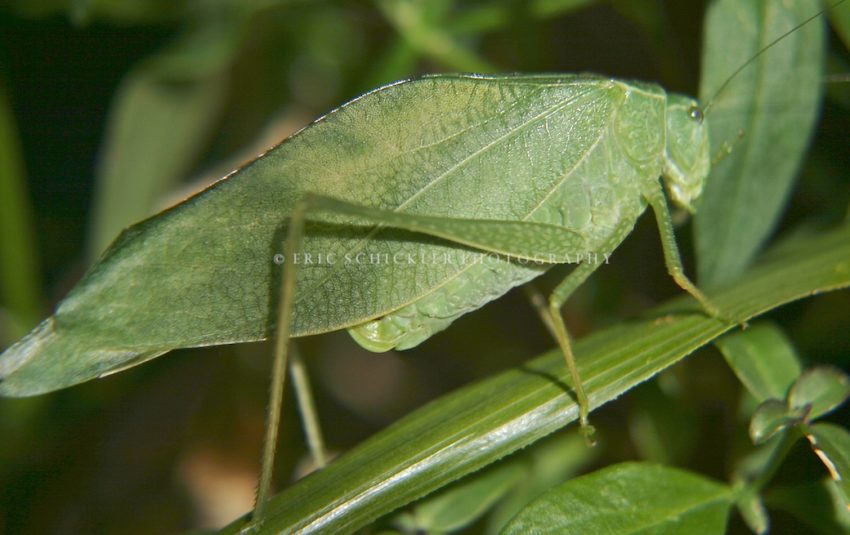
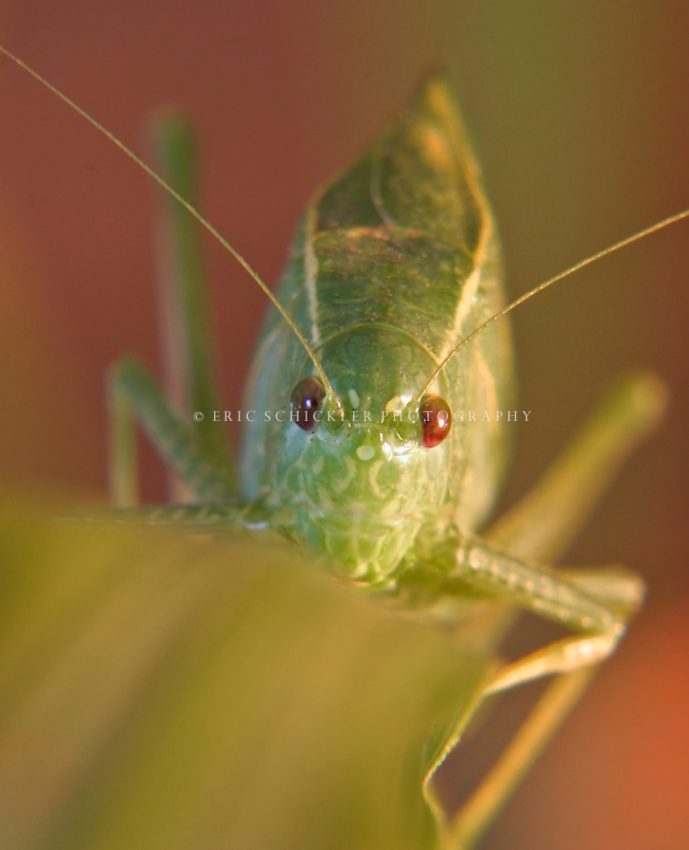
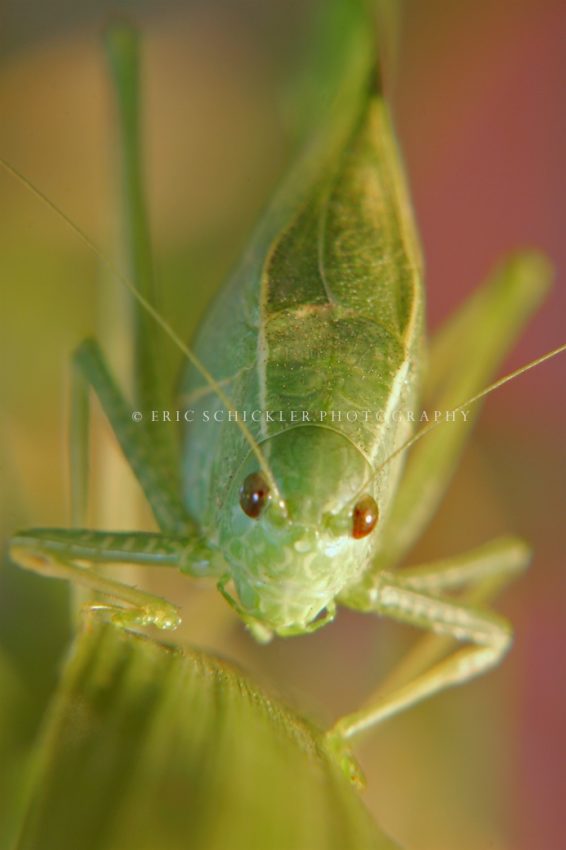
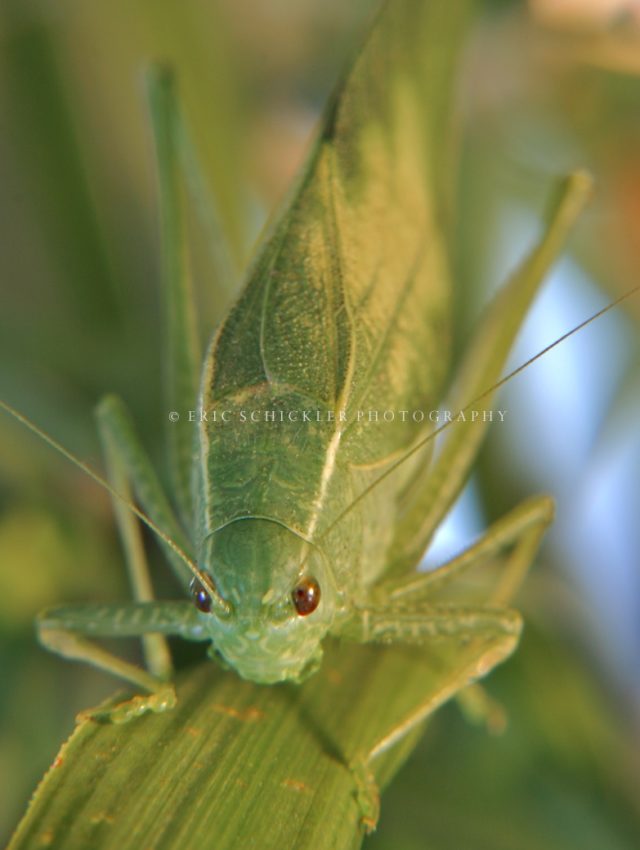
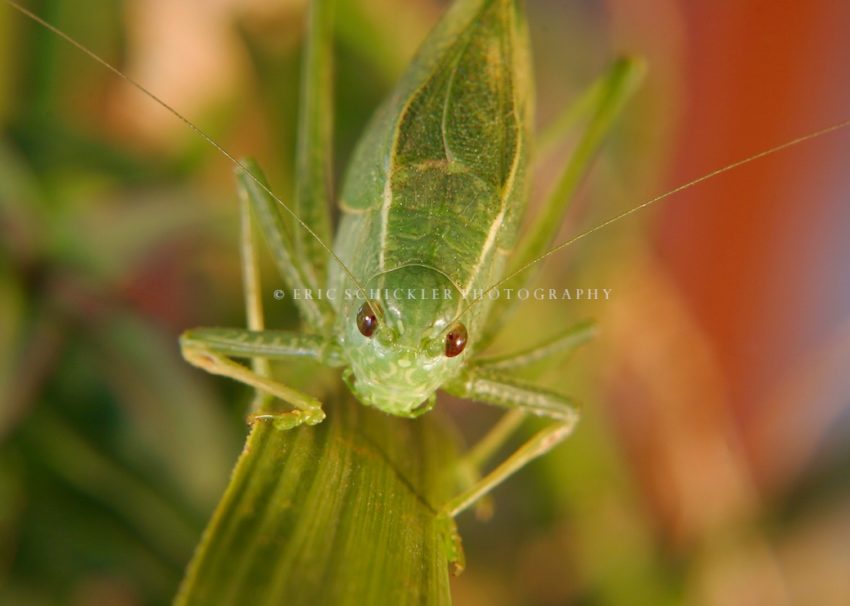

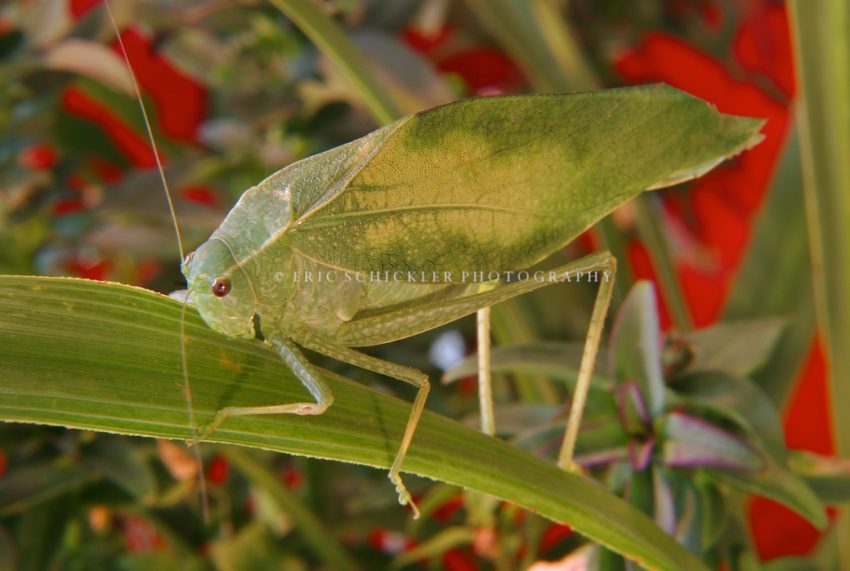
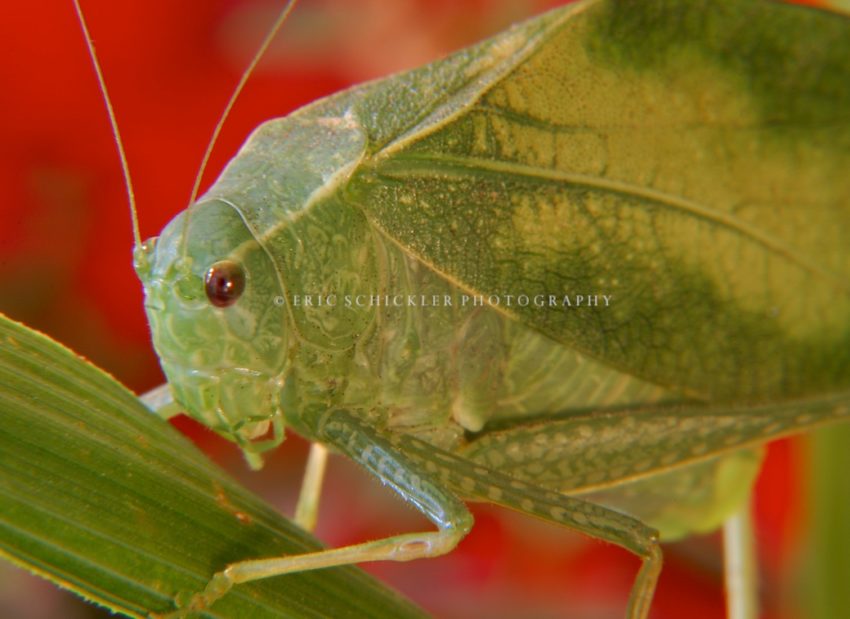


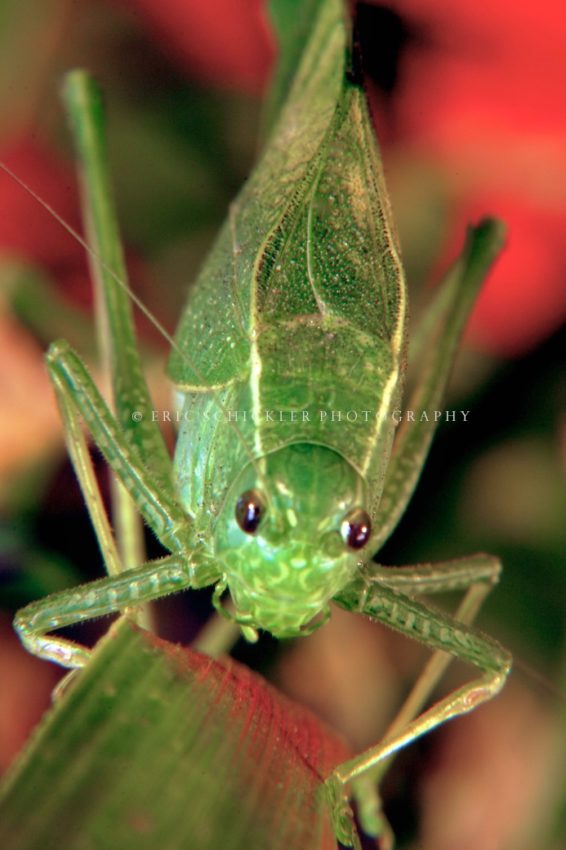
All photos and artwork included in this Web site are copyright-protected and the exclusive property of Eric Schickler Adventure Photographer. No downloading, use, reproduction, manipulation, sale and/or distribution permitted without express written consent.
© Eric Schickler Adventure Photographer
Holy Cow!
There once was a work of art who was a cow. And a cow who was a work of art, a piece of work, a one-of-a-kind, you could say. This notorious creature wore all the colors of the rainbow. Her decorator, Alex Knuckles, a student from Mexico attending Colorado University, wrapped her in the vibrant colors and artistic style of his homeland. This cow was born to party, so it made perfect sense he named her “Moocho Fiesta” (“Big Party”).
She had the sense that she was from good stock. In fact, she was worth a barnyard full of pesos, and in America fetched a fistful of dollars.
She was one of many painted cows at the 2006 “Denver CowParade.” Prior to the Denver CowParade in 2006, this charity fund raising program had visited more than 25 cities around the world, and raised more than $11 million for a variety of charitable organizations.
It helped create temporary public works of bovine art, which were then auctioned off to people who desperately needed some very unusual yard art.
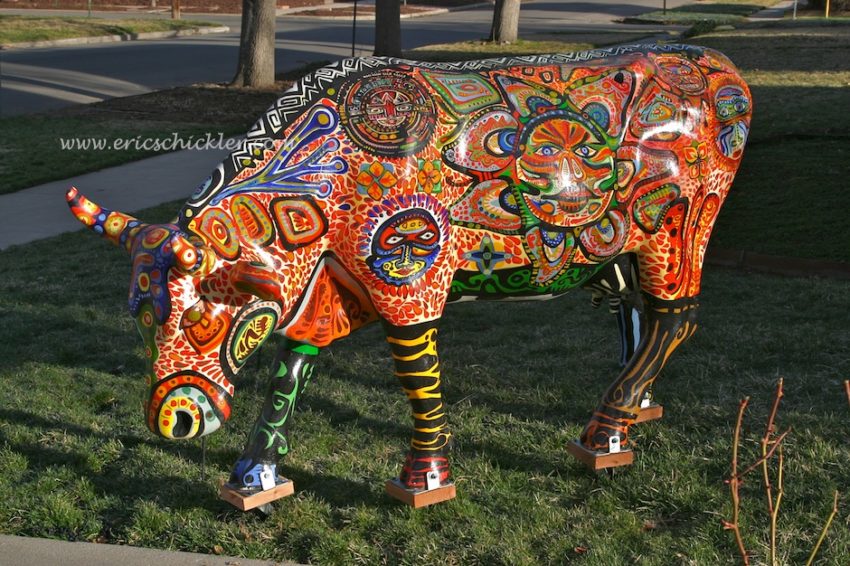
Moocho was one of several dozen Denver cows at the glitzy charity auction event, and probably not the prettiest and most popular in the herd. But her bidders were instantly enamored by her visual brilliance, even if her head was full of air. Even if she was dumb as a cow.
The purchase of Moocho was somewhat of a fluke. Other bidders were apparently moooved by more appealing cows, so bidding was sparse on Moocho. Adult beverages, the charitable spirit of the moment, and a loose arm raising a bidder’s number card quickly turned into a unexpected winning bid. “Moocho is yours!” came the auctioneer’s quick and direct declaration. And with that, a residential plot in the city was about to become a farm.
While the final bid was lower than that on other cows, it was still a hefty amount for a hand-painted, hollowed-out grazer. Besides, walking home, down city streets, towing a life-size cow replica was not part of the evening’s plan. But they made no beef about it and gladly paid the cattleman.
Once situated at her new residence, this color-branded bovine kept the neighbors entertained and was the centerpiece of front-yard gatherings in her tiny pasture in an East Denver neighborhood. On rare occasions, she was known to join in the happy-hour fun, balance a beer on her back, and a pretzel on her rack.
She kept the grass and ground cover neatly trimmed. And she never made a mess. She sought refuge in no barn during many a Denver winter, unwilling to hide her hide, preferring to brave the snow and cold, confident her colors would fend off frostbite.
But over time, Moocho grew tired of her sedentary, confined existence in one small city plot. She tried to ramble. She tried to escape several times. Her owners were forced to chain her up. A cow on a “leash?” I know… it’s sad, pathetic and some might say cruel.
But Moocho had the stamina of a bull, and wasn’t about to be confined. One day she broke her chain, and tried to launch off a large snowbank in the fenced-in back yard. Cows tip; they don’t jump. It was an ugly landing.
After a few months chained up, Moocho finally came up with a very clever idea. She turned to a whole new strategy. After offering a full year of fresh milk as an incentive, she somehow convinced her owners to grant her the privilege of her getting own USDA-approved wheels. Kind of like when your kid gets roller skates.
It worked! After that, no yard was safe, and Moocho was free to take her big party just about anywhere.
Her former low-commotion days of hoofin’ it around a single yard were over. She was on a roll. She now coasted through life. Milked it for all she was worth. She wasn’t about to let anyone put her out to pasture. Moocho was gonna grab the bull by the horns and find whatever pasture she desired.
____________________
All photos and artwork included in this Web site are copyright-protected and the exclusive property of Eric Schickler Adventure Photographer. No downloading, use, reproduction, manipulation, sale and/or distribution permitted without express written consent.
© Eric Schickler Adventure Photographer

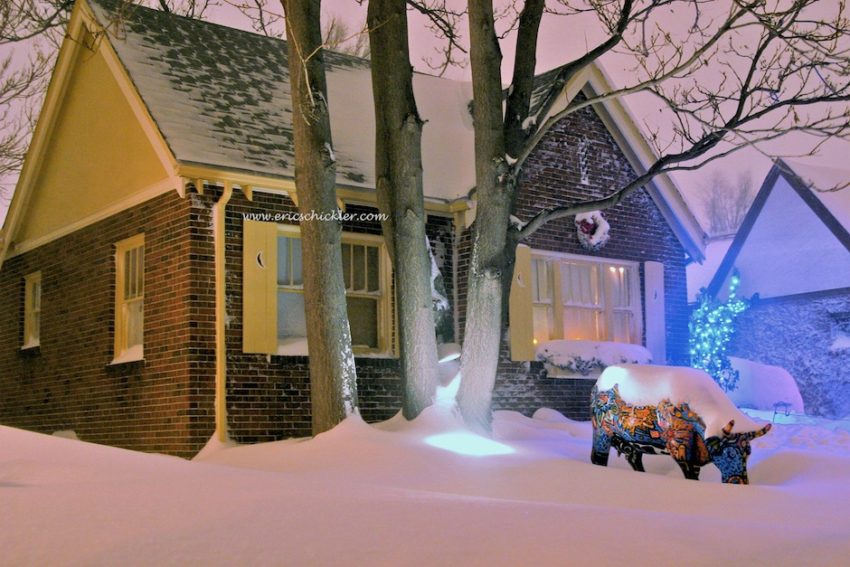




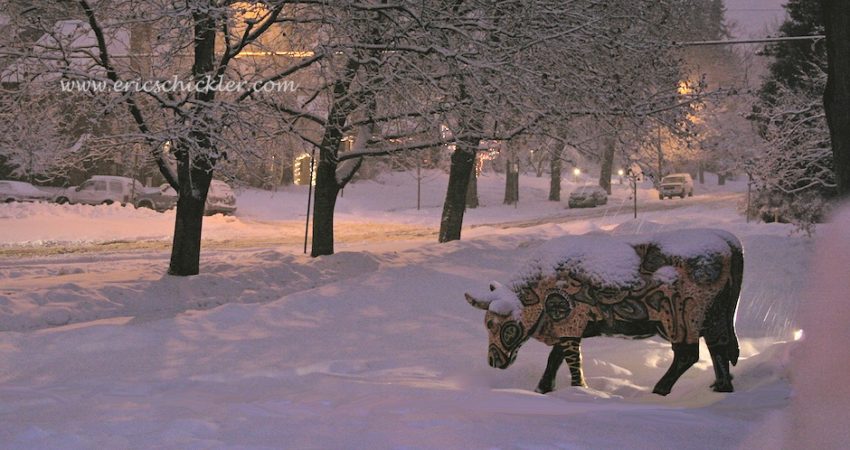
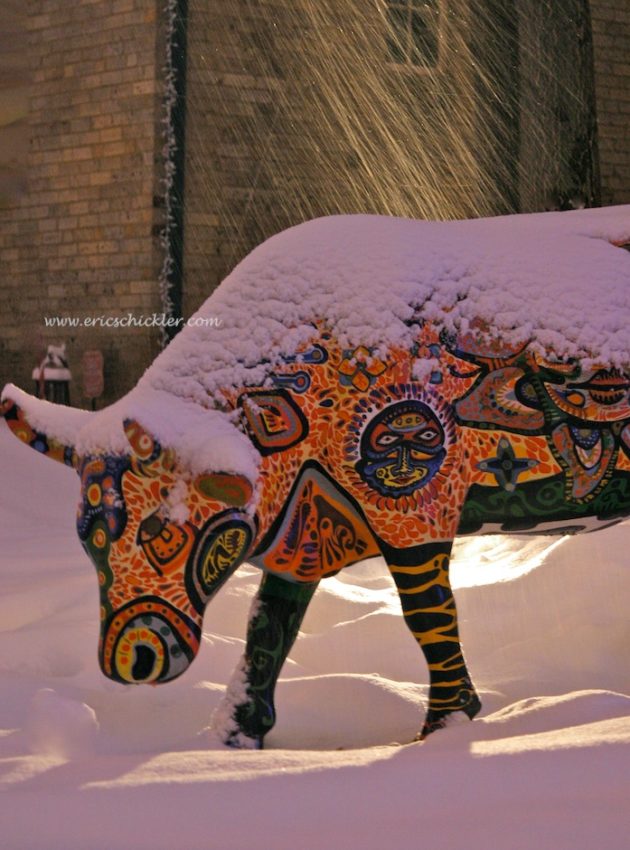

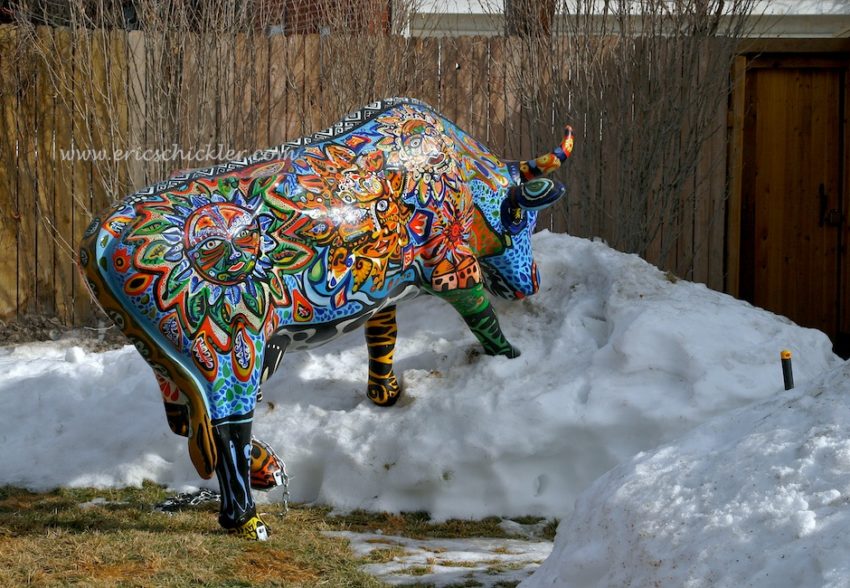
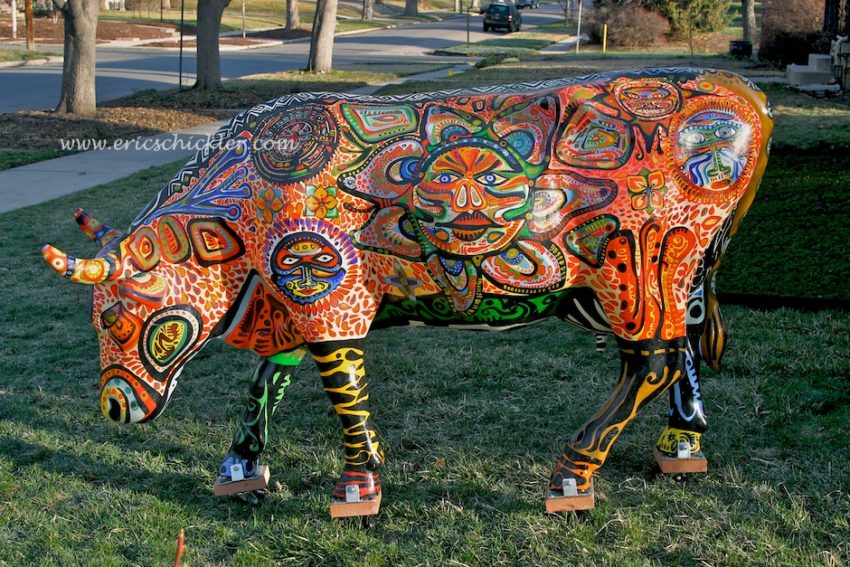


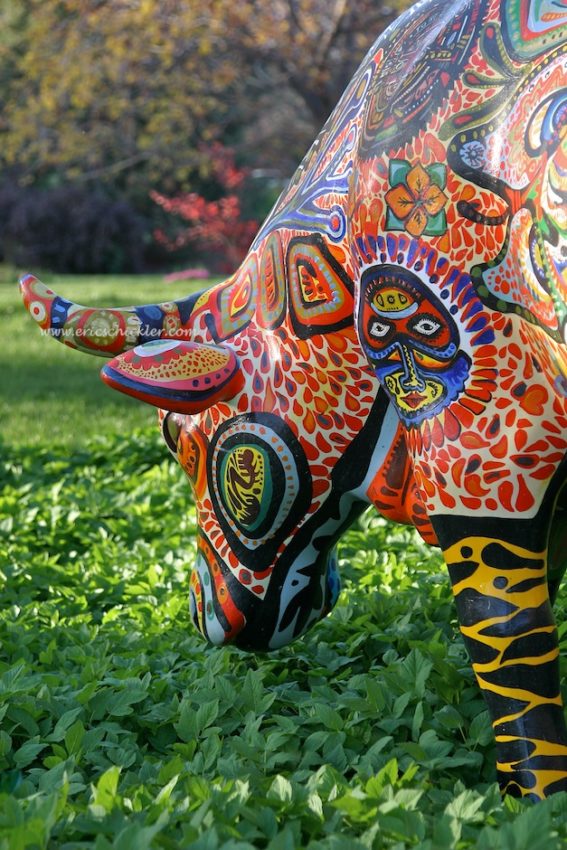
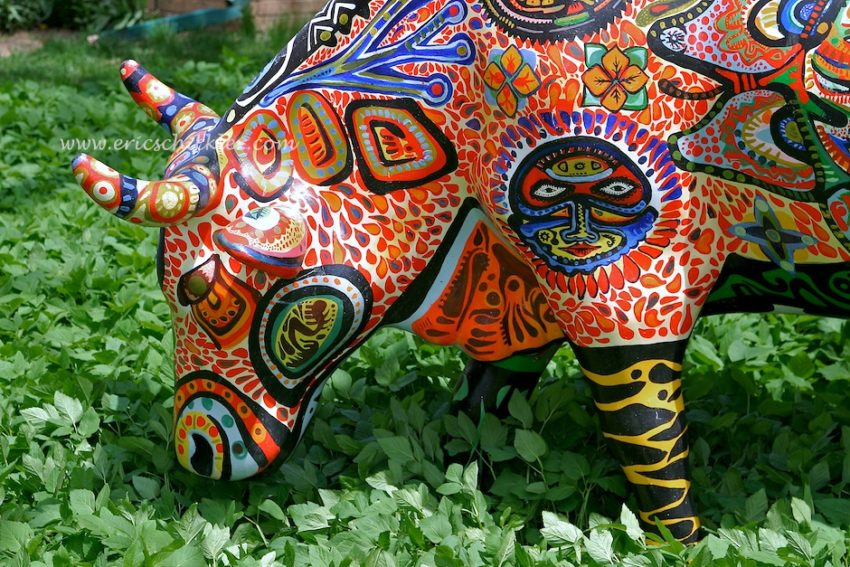
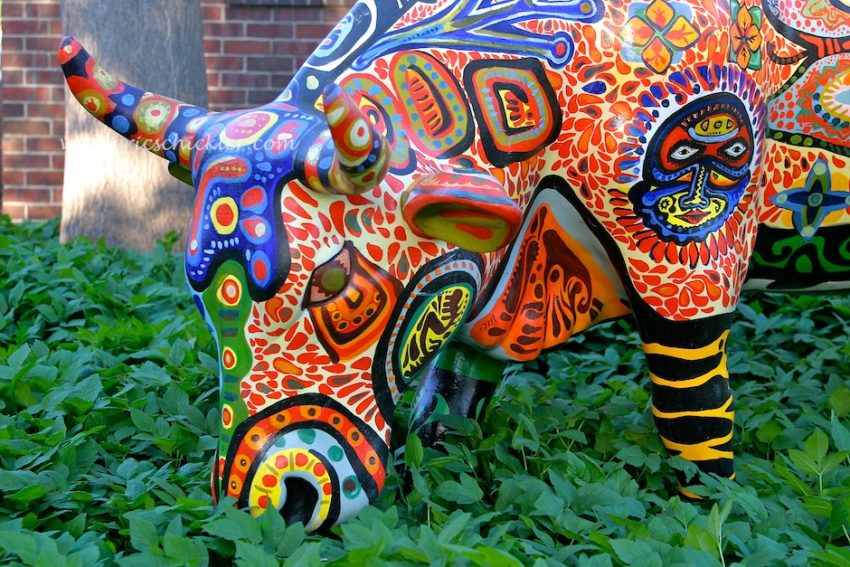
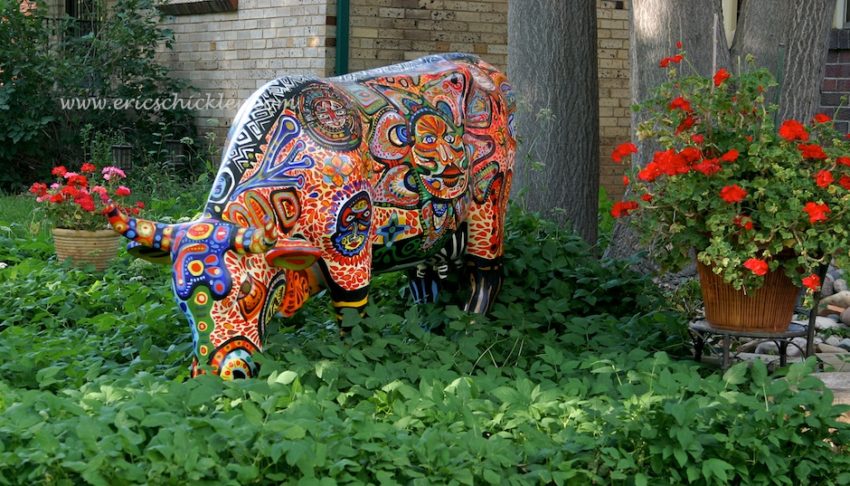
Soccer (Fútbol), Football and Baseball
I really wanted to play football when I got into high school.
As a kid, I played in neighborhood pick-up games almost every afternoon during the fall. I was fast, rugged for a small guy, and competitive. In high school I now had the opportunity to join an organized team, with equipment and uniforms and official fields, with lights at night, announcers, yard lines, real opponents from other schools, and best of all, motivation we rarely had in our backyard games–cute cheerleaders bouncing around on the sidelines.
“Naw. Too rough. You’ll get crushed,” warned my dad. “You’re no giant, ya know. How about soccer?”

Pop was always extremely skilled at offering me options in life. As I got into my teens, both he and mom started loosening up on some of the strict parameters cast around me. They developed this amazing ability to balance general advice with occasional specific orders. They operated then, and still do, with refined diplomatic grace. They are pure masters at it.
They were carefully, subtly, but deliberately introducing me to the concept of adult free will and the value of making my own thoughtful decisions. each of which results in either rewards or detrimental consequences, and more often than not, a mixture of both.
They were letting me learn from my successes and failures, as long as it was not too brutal. I usually caught on, realizing that sometimes short-term gratification and delight can mask over a hollow infrastructure, where more genuine, lasting benefits never materialize.
“But Dad, seriously? Soccer? Who plays soccer?” And who actually tells people they play soccer?”
Very few kids in America did play the sport when I was a young pup. It was popular in the Northeastern U.S., but was still in its infancy nationwide. Nevertheless, it was becoming more prevalent as a school sport, and dad saw it as a safer option for his son’s physical longevity.
“C’mon Dad, football players are tougher, have prettier cheerleaders, bigger crowds and attract more media attention. They also get more pages in the school yearbook.”
Deep down I recognized that there was another thing driving me. I know this may sound silly, but it’s a guy thing, I guess. Most of all, I wanted to wear a helmet. A helmet emblazoned with some cool team logo.
When you put on and take off a helmet, you know you’re playing a real sport. An intense sport. Helmets weren’t very prevalent in sports when I was young, so you were something special if you had one on your head. Nowadays, of course, a helmet, or some kind of protective head gear, is worn for nearly any activity: baseball, cycling, skiing, snowboarding, rafting, kayaking, mountain climbing, lacrosse, babysitting, day care, and divorce mediations. Who knew about all the potentials hazards back in the 1970s?
Even as a know-it-all teenager, I was smart enough to recognize that my folks were making a special effort to let me steer my own ship, but were being kind enough to offer wisdom based on experience. Nearly always, they knew better. They wanted to protect me. That was their main job. They wanted me alive and standing up straight for the next family photo. I gave them credit for all that … at least most of the time.
In the case of playing football with guys twice my size, I could see that dad had a point. Besides, he liked me. He wanted me to make it to college, maybe even live into my twenties. I think he also wanted a reliable golf buddy for later in life.

Photo: NFL
His description of the top ten worst football injuries was the clincher. I was being swayed.
“You think it over for a few days, son. We’ll talk about it some more then.”
After a few follow-up discussions about the size of linebackers, those famous ten injuries, and the subsequent healthcare costs, I acquiesced. Maybe I would like soccer. Besides, the school’s logo didn’t look all that impressive on the helmet.
____________
“Ya know, Dad, I do like soccer. I like soccer players better, too. They don’t have that super tough-guy attitude football players have. And they aren’t hung up on rituals and symbolism like baseball players. Plus, it’s a hell of lot more fun and active than that stupid baseball I played when I was in elementary school. Little League and all that organized, pretentious stuff. No action and a lot of sitting on the bench was all that was. Besides, I hated missing those fly balls out in centerfield. How was I supposed to know it was because I needed glasses? Everyone, including myself, just figured I sucked as an outfielder.”
Since they invented contact lenses, I could enjoy soccer to its fullest. Besides, the ball was easier to see in the first place. Soccer is so much better for a kid’s self-esteem and confidence for one huge, simple reason. If you screw up in a game, maybe get the darned ball stolen right from under your feet by a guy you truly dislike, you have an immediate opportunity for recourse.
You can chase his butt down, steal the ball back, and do something awesome with it, like juggle it in front of the cheerleaders, bounce it off your head, heel-flick it to a teammate, or maybe even score a goal. And you could do it as soon as your young little feet got you back in the vicinity of the ball. And the crowd, of course, would go berserk, because you got revenge, and sports fans love that kind of thing.
So soccer allowed you to control your own performance. If you wanted to get results, you had more opportunity to go after it. What could be more American than that? (Even if it’s not an American game).
But in baseball, if you dropped a fly ball out in center field, you’d have to stand there, in full open view of everyone, looking stupid and embarrassed for one, two, maybe three full innings! Your ability to recover your dignity solely depended on the sheer chance that some chump on the other team might hit another fly ball in your direction.

Otherwise, you were stuck with the everlasting shame of missing an easy fly ball, maybe even losing the game for your team. What kind of a game is that for kids? Why should one’s ability to get results depend on so much structure, on someone else’s actions? It’s a very strange game. Not enough action, and too much nonsensical, unnecessary talking.
And what’s with all those ridiculous signs baseball coaches make to instruct their runners about what to do next? Then there’s the catcher doing practically the same thing to the pitcher, except he’s making frantic maneuvers between his legs, which in many ways looks like he’s doing something he shouldn’t be doing in public, all the while encouraging the pitcher to look in that specific location very carefully.
Baseball. Really? If it weren’t slow enough already, you can also just stop the action, at any time–with permission from the almighty, infallible umpire, of course. And he always grants it. So the fans reach for a beer or order more Cracker Jack, because there’s yet another break in the action. Why? Because, I truly believe, the catcher needs to chat with the pitcher about what he should get his girlfriend for her birthday, so he halts the game and saunters to the mound for advice. Then, to guarantee that nobody else gets in on the secret gift ideas, they mumble to each other behind the privacy of their dirty leather gloves.
And have you ever seen the umpire inquire about the content of the pitcher’s-mound chatty-chat? No siree. Because that brief pause gave him the chance to adjust his chest protector and mask, clean the dirt off his cleats, blow his nose, check his text messages and adjust his protective cup.
Kids who played baseball came back from games with all the energy in the world because all they did was stand around (in a “park,” no doubt) for nearly half the game. They hardly ever broke a sweat. If they did, it was because it was August, and hot and humid. Good thing baseball is played in the summer, or players would freeze their knee socks off for lack of movement.
It became apparent to me at an early age that I had way too much energy and need for movement to be standing in a “park” waiting for some half-blind, slow-reflex redhead with freckles to connect his bat to a 50-MPH fastball and possibly send it skyward to me, bored and left ruminating about today’s geography test disaster way out in left field.
And if dad and mom didn’t want me to collide with, or evade others with my speed and maneuverability on a “gridiron,” I guess I could settle for running frantically after a bouncing ball on a “pitch.”
So now I understand why soccer has become such a craze for youth. It lets them control their own fate in the game. They can effect change at almost any given moment. It’s a training field for assertiveness, initiative and entrepreneurism. It also allows them to expend all that exuberance and sugar-induced energy, rendering them harmless to their siblings and parents when they come home for the night.

Soccer was just starting to catch on when I as a kid. Back then, in the 1970s, everyone played baseball or football. You didn’t play soccer unless you had a foreign accent.
While I still idolized the intense action, thrills and aggressiveness of football, I found that it worked best from the comfort of the easy chair, in front of the TV every Sunday afternoon. When my body was ready for rest, I’d set my butt down, watch game after game, and let those guys put theirs to the test.
Later in life, I developed a greater affection for soccer because I was precluded from playing it competitively due to a heel injury. Titanium screws and plates don’t lend themselves to soccer shoe comfort. And the idea of one good kick on the heel was all I needed to relegate me to the spectator’s seat for all future soccer games.
Nowadays when I watch a soccer match on TV, I long for being on the field again. I can’t help but move in my chair, or if I’m standing, my leg and feet will emulate the movements of the player with the ball. It’s just ingrained in my soul. That’s soccer for you. It becomes part of you. It gets under your skin. I’m the same way with skiing. I love to watch World Cup racing, and I marvel at the technical skills of the world’s beat skiers, but it just makes me want to be out there skiing myself.
Football is different. I DO NOT want to be out there doing it myself! I want those monstrous, muscle-bound hulks of sweating testosterone doing all the fun work for me, while I adjust the HD setting on my 50-inch plasma TV, eat chicken wings, drink beer, put another log on the fire and stuff a comfy pillow behind my back. Dad was right. Playing football is not for everyone.
But I am not ignorant to the fact that soccer does involve a hell of a lot of running around, back and forth, hither and thither, to and fro, and some might say, around in circles, just for the grand satisfaction of one, maybe two goals during a 90-minute game. Or maybe even a 0-0 tie, followed by the dreaded shoot-out.
And then there’s the interesting concept of the headball, a move which more often than not involves the clunking of two heads together, followed by dramatic falls to the grass by both aerialists, and B-rated, Off-Broadway acting that wouldn’t and shouldn’t garner the slightest sympathy from the most protective mom. Let alone a referee. I really wonder if every team has a drama coach on the payroll.
While there are some wussy elements to soccer, it is generally a very rough, grueling and demanding sport. There are plenty of nasty collisions. And unlike those wussy football players, all secure and bold in their arsenals of protective equipment, soccer players wear a jockstrap, shorts and a shirt. Okay, maybe shin guards. But that’s it.
And if that’s not convincing enough, we’ve all heard the stories about dictators and communist governments or fellow citizens threatening to or actually terminating the lives of unsuccessful soccer players. You don’t want to miss that last shoot-out attempt if you play for North Korea, believe you me.
Excitement erupts, along with an occasional riot or grandstand collapse, whenever a goal is actually scored in an important game. And what opera fan doesn’t long for and soak up the announcer’s elongated, roaring “G-O-A-L-L-L-L-L-L-L-L-L-L-L-L” soliloquy? I honestly think that he thinks if he groans out this single word long enough, fans will think maybe more than one goal was scored, thereby inciting a more widespread riot in the stadium.
Fortunately, no soccer player is ever going to grab the referee, ask to stop the game, and saunter across the field to ask his goalie what to get his girlfriend for her birthday. That’s a definite yellow card. Maybe even a red card. Imagine the riots this might provoke?
As an adult, on several occasions I’ve thanked my dad for averting my attention away from high school football, and suggesting soccer. I know I saved him a bunch of money that doctors would have only used to play golf at exclusive country clubs, all the while chuckling with their other doctor friends over vodka-infused Arnold Palmers at the 19th hole about how they love football players and their frequent horrendous injuries.
As I became more worldly, and learned that outside the U.S. soccer is actually called football, or, as our Hungarian friends say, “futball,” I developed a much-deserved sense of satisfaction that I had it both ways in high school. I actually did get to play organized football, and soccer too — all at the same time. So no worries, Dad. Don’t feel bad. I hold no grudge.
One more thing about soccer. Back in the 1970s, the high school girls found it to be a curious new sport, and showed an attraction to us soccer players. I think it had something to do with the lack of heavy, protective equipment and the fact that we played in shorts. Or maybe they just liked a guy who could run for hours on end, perhaps score once, or maybe not at all, and still be happy.

*****
All photos and text on this web site are copyright-protected and the exclusive property of Eric Schickler Adventure Photographer. No downloading, use, reproduction, manipulation, sale and/or distribution permitted without express written consent.



